Executive Summary
The main objective of this dissertation is to investigate the effectiveness of e-commerce in international trade with a case study of dentistry-based medical tourism in Poland. To focus on this objective, the first chapter concentrates on the background of the problem, the rationale of the research, the scope of this study, and designs three research questions those address the theoretical issue of the e-commerce system, implication of the system at Polish dentistry-based medical tourism, local legislation and the barriers for the implication of e-commerce practice. On the other hand, the literature review provides a theoretical framework of e-commerce, types of e-commerce, and reimbursement of e-commerce, e-commerce business models, and the present e-commerce status of Poland. However, the research methodology chapter focuses on the research approach to measure the effectiveness of e-commerce, primary data collection procedures from target respondents to know the position of dentistry-based medical tourism in Poland, secondary sources, data analysis process, and limitation of data collection procedures. However, the subsequent finding chapter of this dissertation focuses on the survey reports, and the discussion chapter concentrates on secondary resources regarding the effectiveness of the e-commerce system and dentistry-based medical tourism in Poland.
Introduction
The effectiveness of e-commerce in international trade is growing at a faster speed through technology in every aspect of the business while ICT1 has been recognized as the most modern aspect of applied technology in the commercial world. It influences the dentistry-based medical tourism of Poland for discovering newer customs from the globally expanding competitive marketplace; draw the attention of overseas customers through customization of their offerings and format of the overall process and functions to ensure efficiency and effectiveness via website and e-mail marketing. Polish dentistry belongs to the agent-based Dutch model of e-commerce which is incapable to meet the rising demand and urged immediate modification to accelerate the growth of Polish dentistry and its concerning tourism.
The existing process of polish dentistry conducting international trade of their service offering globally through digital networks, the internet, static websites and other similar technologies can be termed e-commerce. While the actual e-commerce practice involves direct selling to the end-users, multi-purpose business involves serving multiple products and services to customers with differentiation of the process for presenting an entity or its offerings unique from market competitors by using most modern software of ERP, SPSS, and SAP. Various patterns of e-commerce applications are helpful in obtaining comparative uniqueness of service selling by the Polish dentistry for their multi-purpose businesses in terms of internet service, network facilities, cable networking, and digital channels or even ease of selling through online networks, which are not yet addressed by the dentil clinics of Poland. For this reason, many mega or even small clinics of Polish dentistry today are inclined for successfully implement visual attractiveness and usability of upgraded techniques of e-commerce to gain more overseas customers. For quick materialization of the existing e-commerce practice in Poland is necessarily concerned with gaining competitive uniqueness through integration with e-commerce strategies, obtaining financial investment, innovation, quality, amusement, and vision of differential advantage with global standards, but the dental sector of the country has lacking with concerned skills.
Although the evolution of e-commerce has originated for the basic purpose of the Polish dentistry-based medical tourism, the modern business environment is more complicated with diversified customer needs and expectations for which dental clinics have pressurized most since they have to keep deeper conjunction with customer feelings. Under this circumstance, dental clinics have to initialize several steps, which could be used to create different images of their organisations for generating greater customer base through online. Customers are generally engrossed to get various benefits including product mix, price competitiveness, prompt service, well- communicated promotion, well-organized service package, and free flow of information regarding the service delivery. All of the concerned tasks can be well fitted with different e- technologies through developing communication, transaction, distribution channels, improved customization and business processes, involvement in e- trading, modified structure and level of specialization, making strong tie with present customers to retain them and gathering newer customers with a speedy rate. Other important technique involves innovation of new offers and gathering new customers, which are possible to develop via internet as an effectual mean of accumulating information, customer identification, and product offering towards the target customers globally taking into account of existing and new rivals. Thus, e-commerce strategies for the Polish dentistry can be more effective here for creating most modern category of customer’s satisfaction along with complying with both organisational and individual exchange objectives of the dental clinics. The success factors in integrating such idea in the dentistry-based medical tourism could be visualised as below –
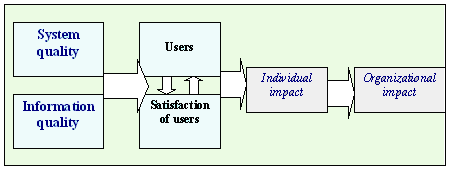
Research question and objectives
This present dissertation has aimed to formulate an appropriate e-commerce mechanism for gaining effectiveness of e-commerce at the dentistry-based medical tourism of Poland for their service selling in the international market. To serve this purpose this dissertational effort has engaged to answer the basic research question as- which e-commerce techniques are most influential for developing competitive advantage for acquisition of customer satisfaction by the dentistry-based medical tourism of Poland. The answer to this question will enable the marketing managers of dental clinics of Poland for implementing various forms of e-commerce tools to differentiate corporate offerings far from competition by increasing customer level of satisfaction and arguing to the research questions as –
- To what extent is the theoretical framework of e-commerce encouraged, the implication of the system at Polish dentistry-based medical tourism?
- How the local legislation would safeguard further improvement of e-commerce in Poland comparing with global standard?
- What are the barriers that prevent the Polish Dental clinics in general for Scopes of the study: –
As e-commerce is considered an effective tool for the medical service providers, this dissertation has unlimited scope to discuss the topic with real life evidence; however, the key scopes can be summarise as following way –
- It has scope to analyze that involvement and dealing with e-commerce system would be the most effective marketing tools in terms of advertising, communication, and profit generation to the dentistry-based medical tourism in Poland;
- At the same time, integration of latest technologies regarding social networking, media sites, and proposal outlining are increasing the number of loyal customers;
- This dissertation has the opportunity to examine both negative and positive side of e-commerce system for the dentistry-based medical tourism in Poland;
- Moreover, it has scope to include the chronological development of e-commerce system in Poland, the impact rule and regulation on the system, and the impact on the financial situation of Dental medical service providers;
- This dissertation has also scope to provide the conceptual framework of the traditional e-commerce system, various models of this system, several issues of marketing, management, customer service, IT, IS and internal process development;
- As Dental service providers are the significant factor for the sustainable economic development of Poland, this dissertation has scope to explore the effectiveness of E-commerce system on this industry with identification of present dilemmas.
Relevant Literature Review
The chapter of the dissertation has delivered in the form the general theoretical background of the study with definitions and proliferations of various variables have depicted to form the basis of analysing the performances of the Polish dentistry-based medical tourism with following sub chapters-
Theoretical Framework of E-Commerce
Laudon and Traver (2007) explained that the e-commerce is the process of enabling the digital transactions between and among assorted institutions and persons by using ICT enabled services; here the term digital transactions comprise every type of digitally reconciled transactions commenced through online. Moreover, these transactions took place through the exchange of value transversely institutional or individual borders by means of products or services and the transaction would occur at one though the delivery of the product or serviced may take time (Laudon & Traver, 2007). Kalakota and Robinson (1999) argued more succinctly that e-commerce is the process of buying and selling over digital medium that may integrate all concerned parties including banks and complete supply chain just through a few clicks.
Types of E-commerce
Laudon and Traver (2007) classified the e-commerce is mainly of three types, which are, B2C, B2B, and C2C e-commerce, in spite there are G2B, G2C, M2B and so on, this study predominantly focuses on B2C e-commerce and B2B e-commerce –
- B-to-C E-commerce: Under this category, the consumers of this segment purchase product and services for final consumption at their end, for instance, Amazon.com has B-to-C e-commerce portal at its website;
- B-to-B E-commerce: Under this category, the customers of this segment purchase goods and services from the material supplies or intermediates those become part of final products after value addition, for instance, E-city is a B-to-B e-commerce portal;
The Reimbursement of E-commerce
Hoffman et al (2004) pointed out that modern e-commerce provides businesses with various benefits, such as large market base, low operating costs, one to one interaction, and huge area staring form online supply chain and generally resulted towards marketing, distribution, and operational benefits. Kurnia (2007) pointed out the most prominent benefits of e-commerce are as the following –
- Innovative applications: During the e-commerce integration, there are huge player who uses newly innovated applications and hence those firms frequently enjoy strategic advantage rather than the competitors, for instance, FedEx provides consumers parcel tracking amenities;
- Competitive weapons: To some extent the e-commerce has also used as the key competitive weapon by integrating different application software necessity for the organisations, for exemplifies, one-click shopping system of e-bay is the firm’s competitive weapon;
- Changes in processes: Any size of firm can usually cover a large geographic area through its e-commerce processing bypassing the border barriers, hence, a number of alterations occur in the operation of the business;
- Links with business partners: An entrenched e-commerce process allows the companies to manage its partners sited in different areas and improve its supply chain network globally for which it is essential to gain efficacy and aptitude has to achieve within the process;
- Cost reductions: The major implementation of e-commerce usually let companies to enjoy large cost reduction for its communication purpose, for consideration, a usual bank transaction in USA costs around US$ 1.07, whereas it’s processing cost in the web-based system is 1 cent or less. Meanwhile, for the traditional mailing, air ticket processing cost is US$ 8 whereas the e-ticket cost is only $1. Mäkeläinen (2006) argued that since the cost of operation is low in this method, the cost reduction is usually availed by all companies to compete in the global market;
- Relationships with suppliers and customers: The complete e-commerce process paves the way to get real time feedbacks from suppliers and customers and by this way, the firm enjoys strong bargaining power over these two parties;
- New products: To persuade consumers of any particular segment overcoming the border barrier, a brand needs to construct something new and offer a number of new attributes which is very easy going with the technique and gives required competitive edge in the marketplace;
- Competitive intelligence: With updated IT applications joining together with e-commerce would generally help the business communities to increase competitive advantages and it is essential to restructure IT applications frequently by collecting information regarding products, markets, and competitions as well;
E-commerce business models
Mäkeläinen (2006) argued though there are several e-commerce business models to institute the system and to build business strategies accordingly, but no business model is well enough to suit every e-commerce activity, this dissertation has discussed following models concerned with the materialisation of the ecommerce at the Polish dentistry-
The Electronic Areas Model
The e-commerce procedure could be either used for integrating the higher profitability in a traditional business structure or as a completely a new electronic venture that discerns traditional business from electronic business through product, agent, and process, marketing, sales and financial transaction. The following model shows the relationship of an organisation allied to technology but it does not pursue any strategy for its success –
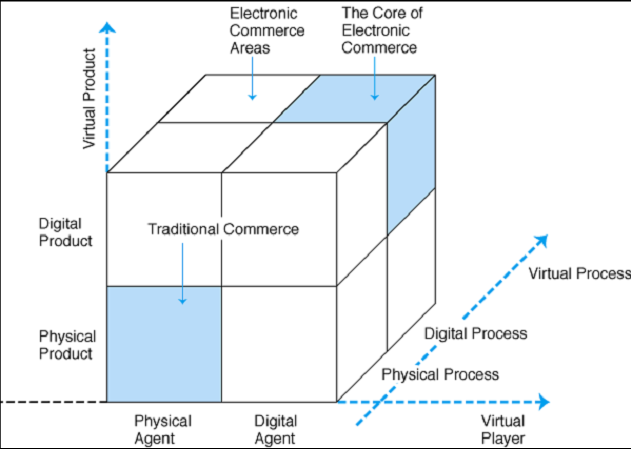
The Hierarchical Framework of E-commerce
Zwass (1998) argued that this model formulates three levels of e-commerce integration such as product and structures, services, and infrastructure where each of these levels depends on the previous levels to acquire strength to integrate digital gateway for payment. Hence, the more the precedent levels of e-tools will provide strong outcomes, the more will be the antecedent levels where the bottom up approach has to apply to build strategies of e-commerce business. To get success, the organisations need to have strong ICT systems, wide area infrastructure along with strong e-commerce products though the levels of the models are not those much flexible to be applied but it illustrates to take care about the key components of an e-commerce process.
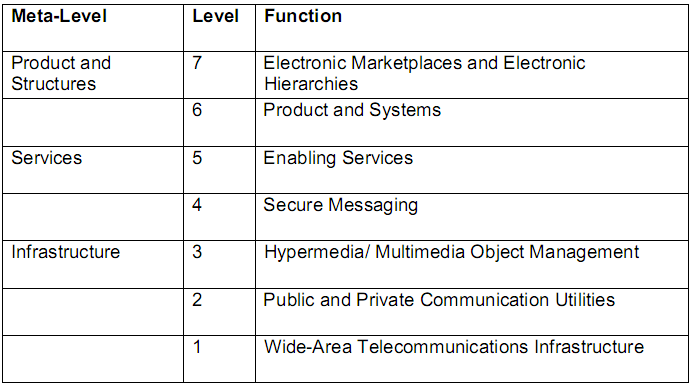
The Electronic Commerce Value Grid
Böhle (2002) pointed out that this business model sorts out the storefronts to gain profitability. A firm needs to work in all five breadths of commerce by using interaction modes to compete in terms of time and distance and provide products to its customers through a chain of relationships among the players. In this perspective, any company can enjoy competence on the fifteen bases, since the efficacy of IT has been measured through efficiency generation, effectiveness, and strategic benefits and ultimate revenue generation. Furthermore, the model reveals the idea of information on demand and suggests appropriate strategies or strategic choices that can be handy to gain competitiveness over competitors in the market place. Thus, the success of the model is relied on the firm’s capability to change the business perception that belongs to the existing practice and the strategic standpoints to avail benefits of new technologies (Grant and Huston, 2001)
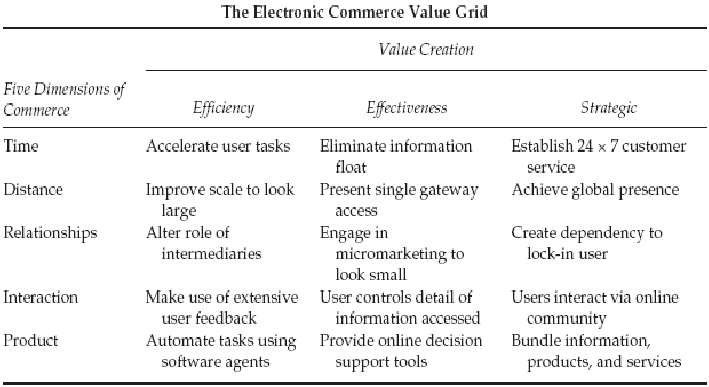
Present E-commerce Status of Poland
Badica et al (2005) pointed out that the existing e-commerce practice in Poland has surfed from the origins of Dutch Auction based traditional flower sales used- different buyer would gather at a platform and fid for the products while the highest bidder would be capable to purchase. For e-commerce practice this model the product and services gathered to the e-shops for selling, buyers agents start for bidding at a lower to higher price while seller’s agent interact and commence the deal. Following diagram illustrates the whole process including buyer, seller and their agents –
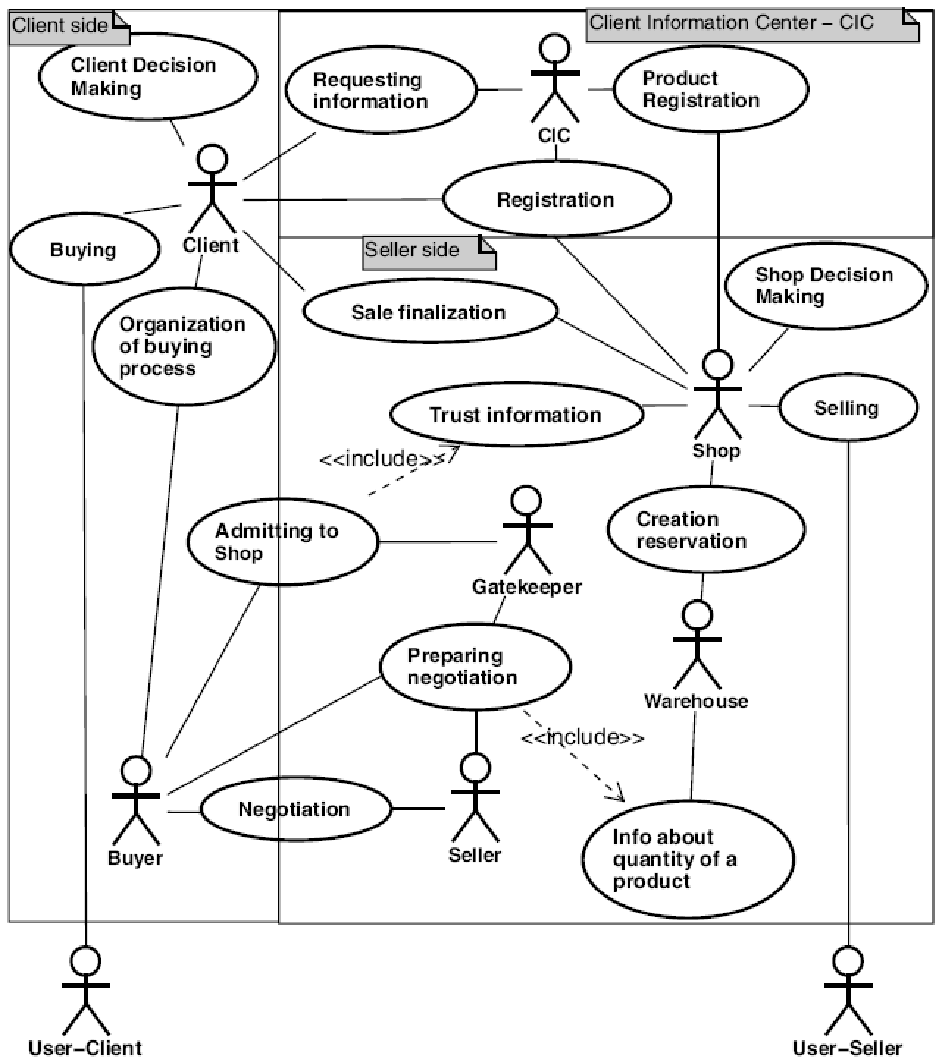
Buyer has corresponded to the CA2that allowed for acting entirely self-directed, while the buying decision made for M units of goods or services as a price P would be correspond to the User-Client server to get confirmation from the seller’s agent, who would like to wait for a certain deadline to maximize his price. The offered bid would be active until it has not neglected due to getting higher price and the CIC3 agent would act to complete the deal by interacting with the database to comply with predetermined terms and successfully complete the deal at the optimal point.
At the same time rather than complete e-commerce model of B2B, B2C, C2C, G2C, or G2B, dentistry service providers of Poland are using a backward agent based Dutch e-commerce model of that concerned with many analogy interface rather than full automation. The Polish dentistry is under challenge to integrate complete e-commerce including its, supply chain automation and e-payment option for online transaction. To check and balance the situation it is essential for the government to address quick ICT reviews to identifying the necessary areas of cooperation required by the sector to upgrade fully automated e-commerce model (Wrycza, et al 2007).
Polish Legislative Frameworks for E-commerce
The e-commerce system and prolonged practice of this mechanism in Poland has chronologically developed through the political motivation toward liberalization of several legislative frameworks, which are facing different dilemmas and raised emergence for immediate reforms for being a member of the European Union. Meanwhile the government is eager to sustain its remarkable GDP growth while the dentistry service providers of Poland are keeping continuous contribution to the GDP growth by earning foreign exchanges through exporting the non-traditional item. The dental clinics of Poland are concerned with international trade through the e-commerce interface and facing different challenges due to weak ICT backbone, inefficient e- banking, and e-supply chain management (Garnik, 2006).
OECD (2006) pointed out that the GATS4 has approved online service delivery as an exportable item with particular categories of four ‘modes of supply’ rather than physical movement of the service provider where the dentistry of Poland has categorized under its mode -1 and 2 may not cover by the national medical insurance. The cross-border supply of Polish dental care services has gained marvelous attractiveness but the e-commerce practice in this sub-sector fasces restraining or inequitable types of limitations prolonged from the pre-Internet era to like bureaucratic red tape for bandwidth allocation, and online connectivity (Herrick, 2007).
UNCTAD (2005) published it information economy report 2005 where it has mentioned that Poland has started it a journey of the Internet use with 2,800,000 users in 2000 which increased 35.7 % in 2001, 133.7 % in 2002, 1.0 8 % in 2003 and 0.3% in 2004 while only the 47 % of the small and medium sized companies have internal access facilities. With backward internet gateway of connectivity, 34% of the ICT market of Poland is dominated by the EU member states rather than local players where banking and financial service sector is the main IT service subscriber and among the existing users 60% have analogy modem for connectivity rather than broadband access (Tamowicz et al., 2000). The security measures for data protection in Poland not yet enough strong even the awareness for data protection does not evident, as a result, hazards of hacking and viruses attacks are increasing.
The Polish Ministry of Economic Affairs has set out its strategic objectives to accelerate the e-commerce integration opportunities for both product and service-oriented local and foreign companies (IBRKK, 2008). The aim of this project is to generate excellence at implication and practice of e-commerce with proper research that would ultimately provide commercial corporations with highly qualified service delivery and accelerated revenue generation. It has already set out the standards for dentistry-based medical tourism clinics by ensuring the principles of existing e-commerce legislation. However, it remains huge gaps in synchronizing the perceptions of Dental clinics and regulatory objectives (Heiderhoff and Zmij, 2005).
E-commerce implication at SME of Poland
Wrycza et al (2007) pointed out that among the Polish SMEs5 95 % have internet assets, 63% of them have at least a static website, 32 % have already integrated e-commerce and 5% have complete e-business setup with c-supply chain management including CRM and ERP, the position has demonstrated in the following diagram-
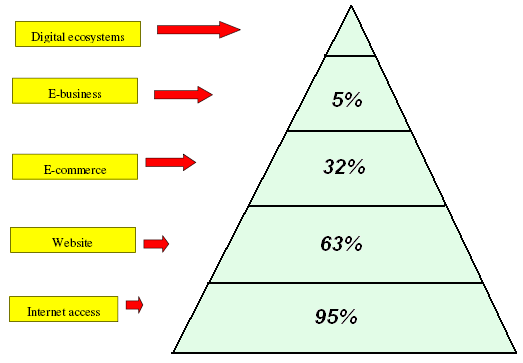
Wrycza et al (2007) added that the expansion of knowledge based economy in Poland deeply concerned with the momentum efficiency of integrating ICT application for any kinds of business solution where the big firms have adopted ICT at the first tire with best solutions but SMEs are going under grave dilemmas to implementing e-commerce with global standards. The Polish SMEs have imperative role in the national economy with their innovation initiatives accommodating 70% of the country’s workforce, thus it is crucial to emphasis e-commerce integration at the SME level and policymakers needed to facilitate them with easy going legal framework and also allocating financial resources to upgrade e-commerce practice. At the concurrent implication it has been evidenced that the SMEs are under practice of either ‘ladder model’ or ‘transporters model’ that denotes the process as – common access to the internet for e-mailing and web browsing, developing the company website, and by communicating through the website commencing sales of goods and services.
Drives for E-commerce Materialisation
Ward et al (2008) pointed out that experiential evidence of radical change in the post-socialist economy of Poland has experienced a better outcome from the market economy and the policymakers enormously aligned for more reformation aimed to the successful e-commerce integration to generate quick economic growth. The Polish academia and scholars have recently started to address the need of improving the performance of e-commerce integration and urged for major reconfiguration. Dental clinics are the major player in the sustainable economic growth of Poland by producing foreign exchange and creating huge employment opportunities in this sector, though, there are huge gaps to address in terms of e-commerce integration compared with the global standard of e-commerce practice by the business concerns.
IST-Africa Consortium (2006) presented the evidence of B2C model of e-commerce model has most terrific scenarios that pointed out that most of the companies with B2C model have turned into bankrupt and shut down while about 600 e-portals are sustaining with narrow turnover and are supposed to be closed. The major dilemmas of such e-portals are mainly they made their transactions by traditional means rather than online credit card pay system and faces the challenge of e-distribution and logistic support failure for which they cannot deliver orders in time and the customers are losing their confidence level in this concern.
Garnik (2004) compared the growth e-commerce of Poland with US and pointed it as a saddening cheaper measuring the growth of eCommerce in Poland three times lower than the US within the same time frame and identified the limitation of inferior progress belongs to the influence of the previous socialist economic system. At the same time, narrow interface of ICT infrastructure, high price of connectivity, lower speed, lower rate of user growth, drawbacks of the legislative framework, bureaucratic documentation system, and lack of skills at the user end. Moreover, the historical and cultural background of the people, trust, and confidence to the system, complicated factors of internet access, including the quality and graphics of the website are all accounted as lower growth of e-commerce in this territory (Badica el al, 2007) and (Badica el al, 2005).
E-commerce implication at the Tourism Industry
Kim (2004) argued that WTO has recognized the e-commerce integration in the tourism industry pointing to the continuous popularity of the Internet and business application of ICT while the tourists are interested to get booking, schedule, and payment directly with the tour operators rather than any intermediation of agents. E-commerce in tourism has facilitated both the service buyer and seller at a single platform to interact, negotiate, and execute tour itinerary while the operators have huge opportunity to introduce new solutions aimed to outsized, steady, and globally recognised tour operator may not be interested for diminutive dynamics of tourism industry.
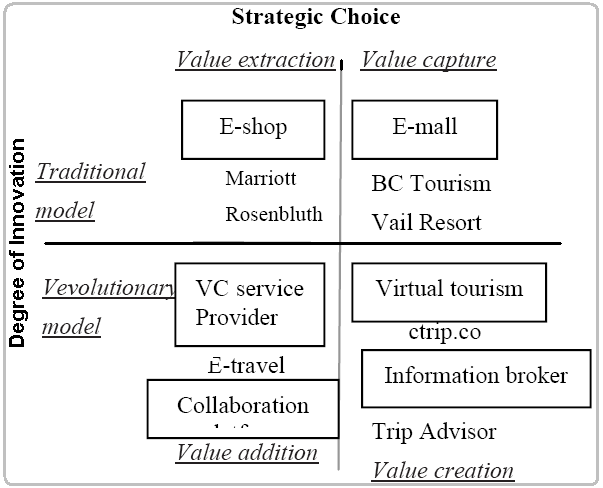
Liu (2006) presented that the tourism e-commerce model has been going through quick shifts due to technological development and such trend has flourished to bring radical transform in the industry, to illustrate the model- it may rise from the traditional viewpoint of tourism but implement under completely new scenario. The above diagram demonstrates that the traditional tourism operator can adopt e-commerce due to their technological motivation while at the same time with new conceptual framework, new operators and get entry in the market with specialization in the e-commerce mechanism.
The Strategic perspectives of Polish Dentistry
Since there are no specific competitive strategies for the Polish dentistry to gain competitive advantages in the international operation, the following strategic perspectives are more important to work out a particular strategy (Gunnesson and Soderlund, 2001):
- Informational economy perspective: At Polish dentistry, the prolonged idea is that, the new technological changes around the globe are quite disruptive because of its immense heading around the world and the market space including virtual value chain would help the marketing activities by providing information while most valued drivers of e-commerce in this respect include time, efficiency (cost and time concerned), and the uniqueness of dental care;
- Industry organisation perspective: The e-commence strategy from the perspective of Polish dentistry is usually defensive on the ground of following the external forces in the industry, where all firms are required to place itself in the value chain by responding to the industry pressures those have devised by several examinations including value chain analysis;
- Resource based perspective: All organisations of the Polish dentistry-based medical tourism can enjoy sustainable competitive advantage by using its resources that can eliminate its weaknesses, counteract threats, and exploit strengths while the resources and their subsets get more importance such as one subset of those resources may gain competitive advantage and another subset may sustain long-term performance;
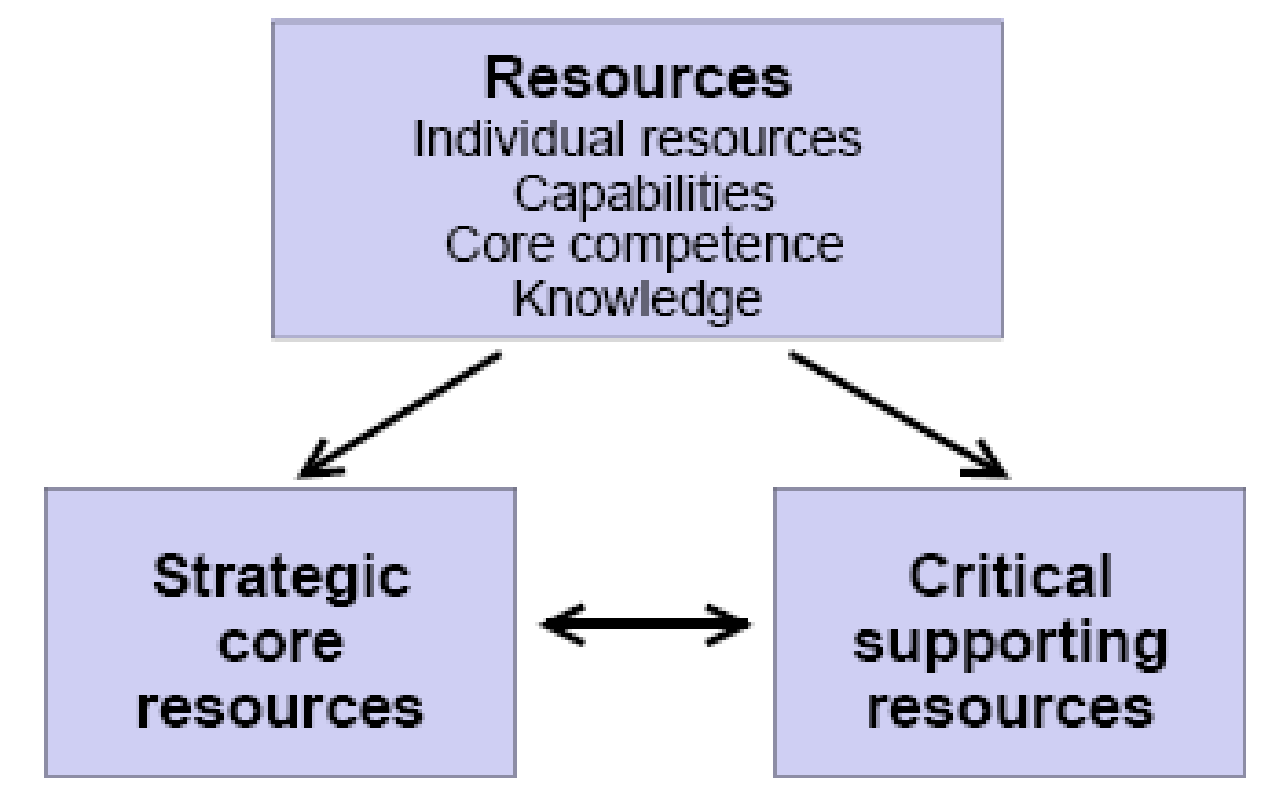
According to the above figure, the strategic core resources are the primary resources for competitive advantage, the critical supporting resources usually lie in the line of core resources and are varied to non-transferable attributes of the dental care industry, these should be rare, valuable, not substitute, not imitable by ecommerce implication.
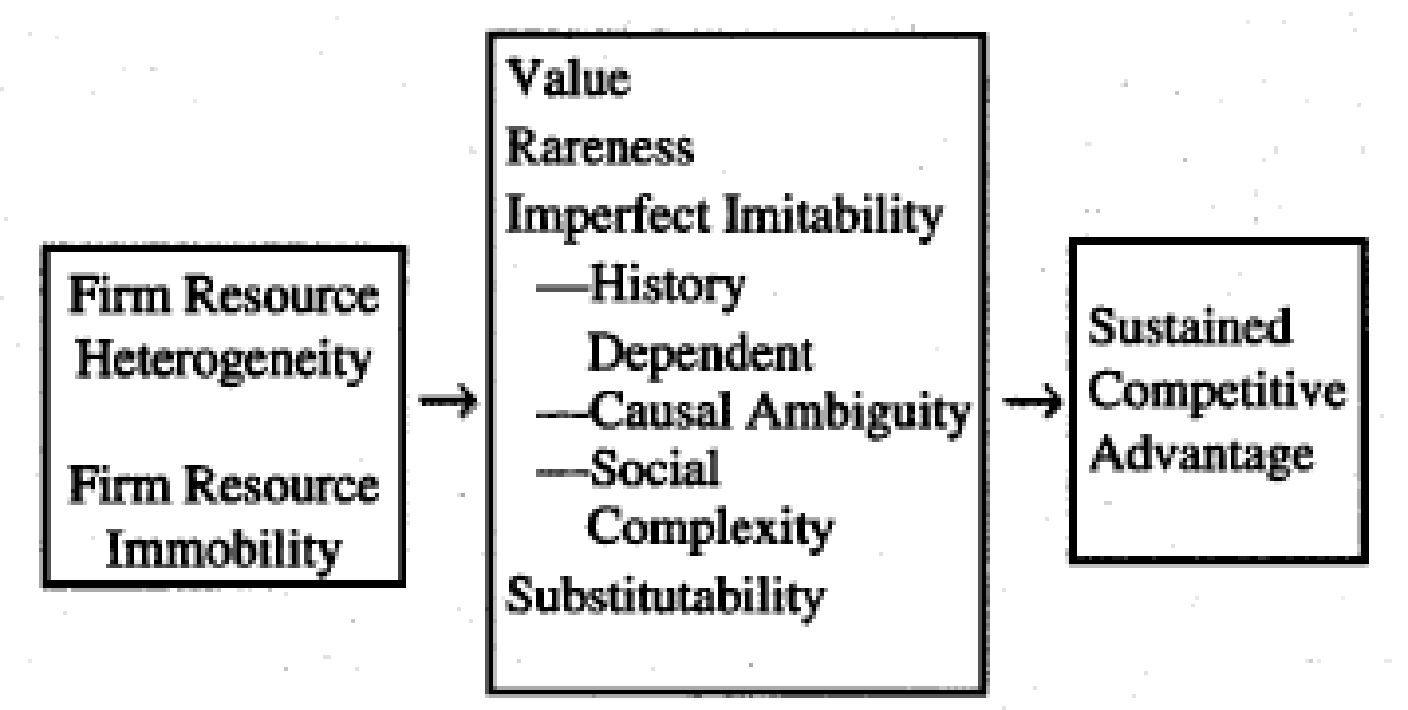
- Networks and Relationships Perspectives: From the theoretical viewpoint by focusing on leveraging external contacts Polish Dentistry can gain a competitive advantage where the external contacts may include contacts with suppliers, competitors to create relationships online, organisations need to regard information, transaction, and interaction online;
- Market Orientation Perspective: Every organization under the Polish dentistry has the wide function of initiation of market intelligence, communication of the intelligence, and providing a response to the intelligence with a strong need of changing marketing orientation according to several environment moderators through e-commerce implication;
- Brand Perspective: Every organization under the Polish dentistry needed building the strategies on branding requires thinking about the brand awareness, brand image, and brand extensions.
Research Methodology
The purpose of this chapter is to give a clear perception about the process of research formulation, data collection methods, data analysis system and questionnaire design procedures to analyze the effectiveness of e-commerce in the international trade with the case study of dentistry-based medical tourism in Poland.
Research Design
This dissertation would be formulated with considering both qualitative and quantitative types of research because Malhotra (2009, p.132) stated that qualitative research plays a significant role to describe the problem and, fin out the solution while the quantitative research approach is the process to quantify data. However, he further added that the main difference of these two approaches is the content questionnaire to collect primary data such as if the questionnaire design to get a descriptive answer then the research can be said qualitative research.
Primary research
Miles & Huberman (1994) stated that primary data address the exact problem of the present research and they also added that the collection of primary data is a time-consuming factor, and need enough money to conduct field survey, and there is a chance to fabricate the result of the data. At the same time, Marshall and Rossman (1999) pointed out that the researcher need to identify target respondents for the research who have broad knowledge about the research area and the face-to-face interviewing method would be most effective approach for data collection. However, the effectiveness of e-commerce in the international trade and dentistry-based medical tourism in Poland is the vast area for research; thus, there is no way to ignore primary research but it would not be possible to collect data by conducting face-to-face interview. In this circumstance, it would be effective to send the questionnaire by e-mail to get prompt response from the respondents though dentists, medical representatives and others are busy with their own professional activities but it can expect that they will co-operate to conduct this research. To analyze the data and present graphically using Microsoft excel, the collected data need to check and edit to remove error from the research; for instance, the respondent may select more options in one questions or may dropped out blank, those need to send back to the respondents to complete the questionnaire or the researcher need predict the actual response.
Secondary data
According to the research approach of Sekaran (2006) and Zikmund (2006), secondary data is more valuable than primary data as it is prepared data and recognized by the famous universities and publishers. This dissertation would use many books related with the topic particularly e-commerce- Business, Technology, Society by Laudon, e-Business – roadmap for success by Kalakota and Robinson, structure and macro-level impacts of electronic commerce by Zwass, and law of E-Commerce in Poland and Germany are too effective secondary resource. At the same time, this dissertation concentrates on the journal articles like Journal of computer-mediated communication, other helpful web resources such as a theoretic discussion of tourism e-commerce, integration of electronic payment systems, and business models for internet based e-commerce, assessing the adoption of e-business in the region, post-socialist varieties of temporary staffing are the useful articles for this research.
Questionnaire Design
The outcomes of the research and key recommendation would mostly depend on the questionnaire; therefore, designing a questionnaire is one of the most important tasks (Saunders, Thornhill and Lewis, 2006). According to the research methodological approach of Malthora, there is no specific rule to formulate the questionnaire though the research can follow a few steps such as the researcher can consider research questions, data collection method, the content of the questions, structure and so on. However, the following figure provides some considerable factors-
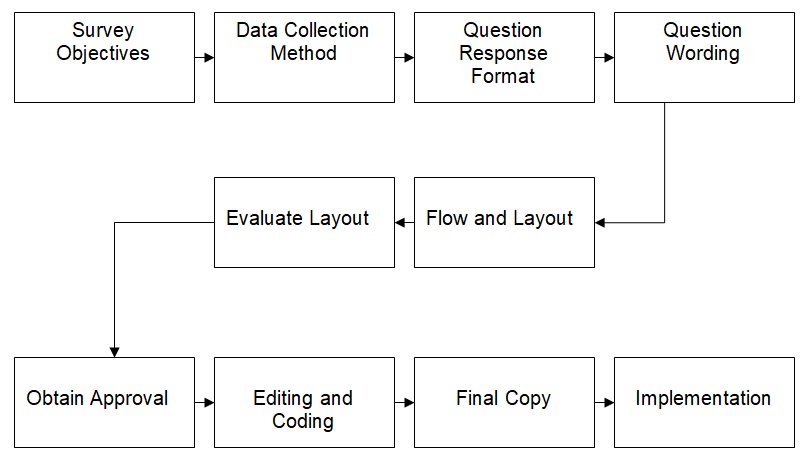
Table 2: – Content of the questionnaire. Source: – Self-generated.
Limitation of Data Collection Process
- The effectiveness of e-commerce in the international trade and dentistry service providers in Poland is a vast area to discuss; therefore, the word limit was too short to conduct this research;
- On the other hand, there were too many issues need to address those had to overlook due to lack of sufficient deadline as well as lack of words;
- One of the main problems was primary data collection from the respondents because it was not possible to collect data by conducting face-to-face interview due to short time. As a result, it should require to rely on e-mail and other instantaneous methods and need to wait for the response of the respondents but many of them give feedback after completing the research work;
- However, there are many secondary data available regarding the effectiveness of e-commerce, but there is no reliable data available providing a clear model of e-commerce system to analyze the dentistry service in Poland.
Findings and Results
The main idea of the findings chapter is to scrutinize the results of the actual survey to evaluate the effectiveness of E-commerce in international trade with consideration of dentistry-based medical tourism in Poland. The researcher has handed over the questionnaire to forty professionals in the Polish dentistry service providing industry focusing mainly on dentists, IT professionals, medical representatives, and some other experts.
Section A: About respondents
Name of the Respondents
This was a general question necessary to introduce to the interviewees of the investigation.
Age of the Respondents
Among 40 interviewees, 15% were aged between 18 to 25 years, 25% aged between 26 to 35 years, 20% aged between 36 to 45 years, 10% were aged between 46 to 55 years, and 30% aged 55 years or over.
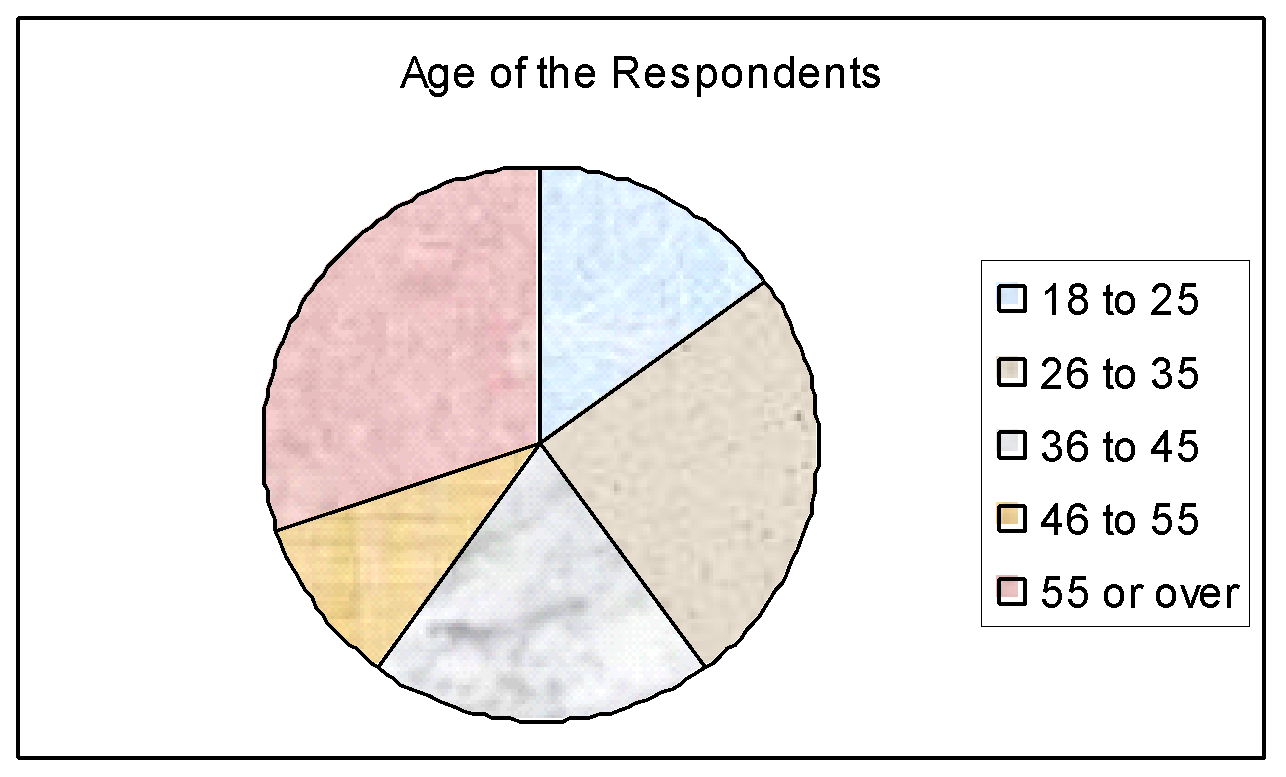
Profession of the Respondents
Thirty percent of the interviewees were dentists, 20% were medical representatives, 30% were IT professionals, and 20% were some other professionals.
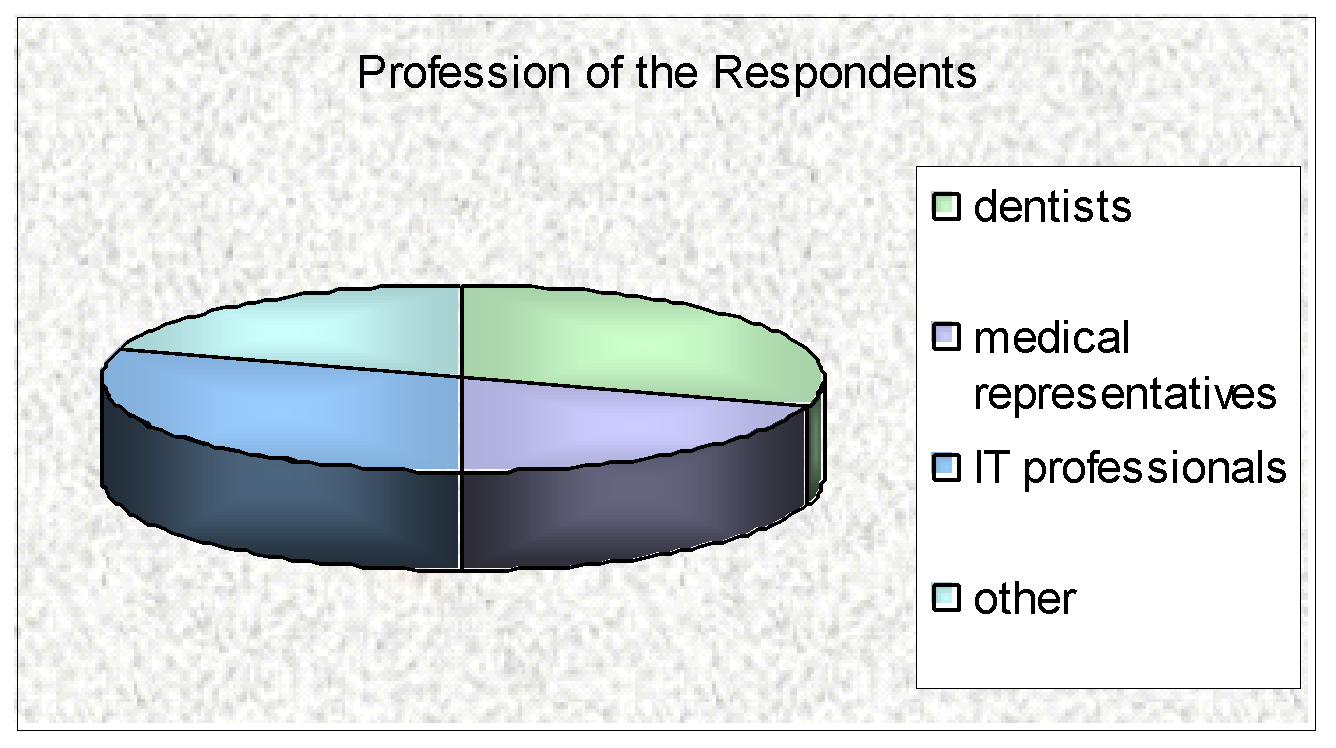
Years of Experience of the Respondents
Twenty percent of the surveyed population had experience below five years, 50% had experienced between 5 and 10 years, and 30% for more than fifteen years.
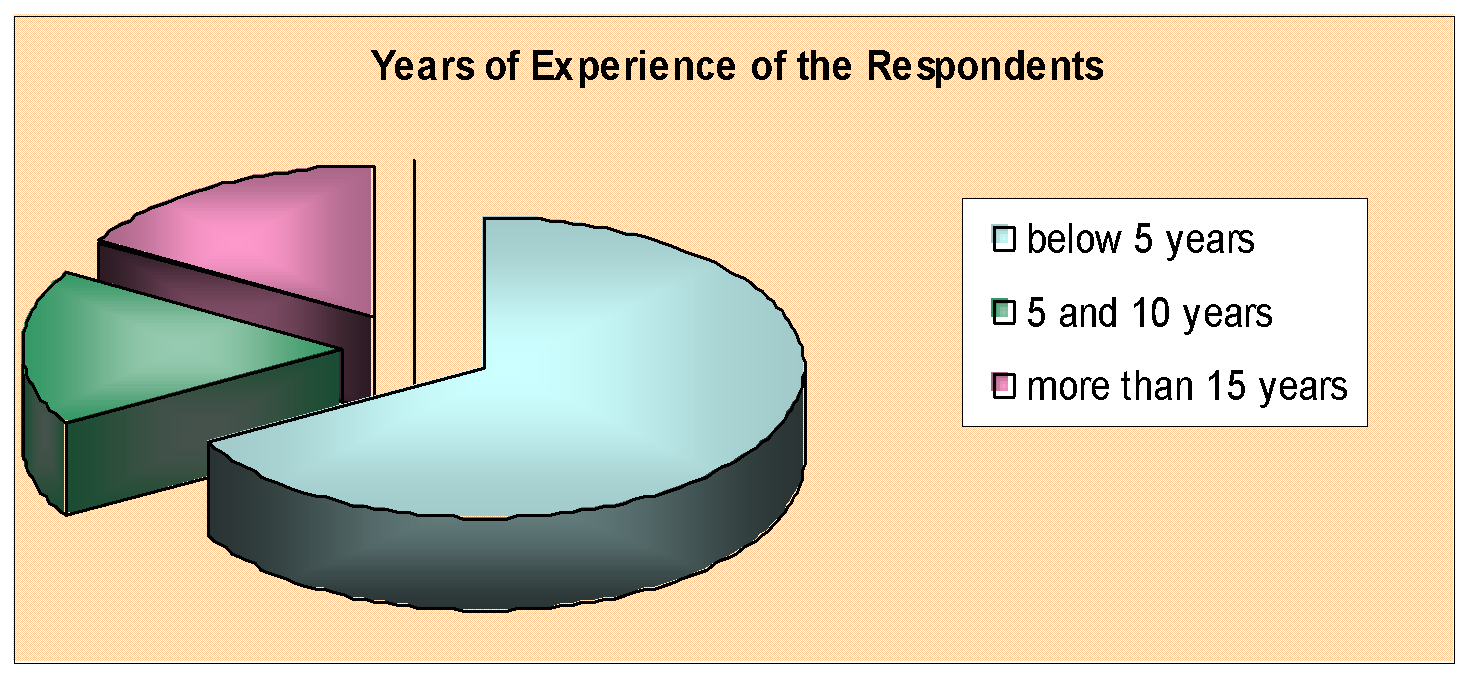
The Most Significant Issue for Which Customer Would Be Loyal With Dentistry of Poland Rather Than Other Countries
Forty percent respondents suggested quality as the most important issue, 10% suggested integration with technology, 10% went for bundling offer, and 20% stated price advantage, whereas 20 went for all of the above.
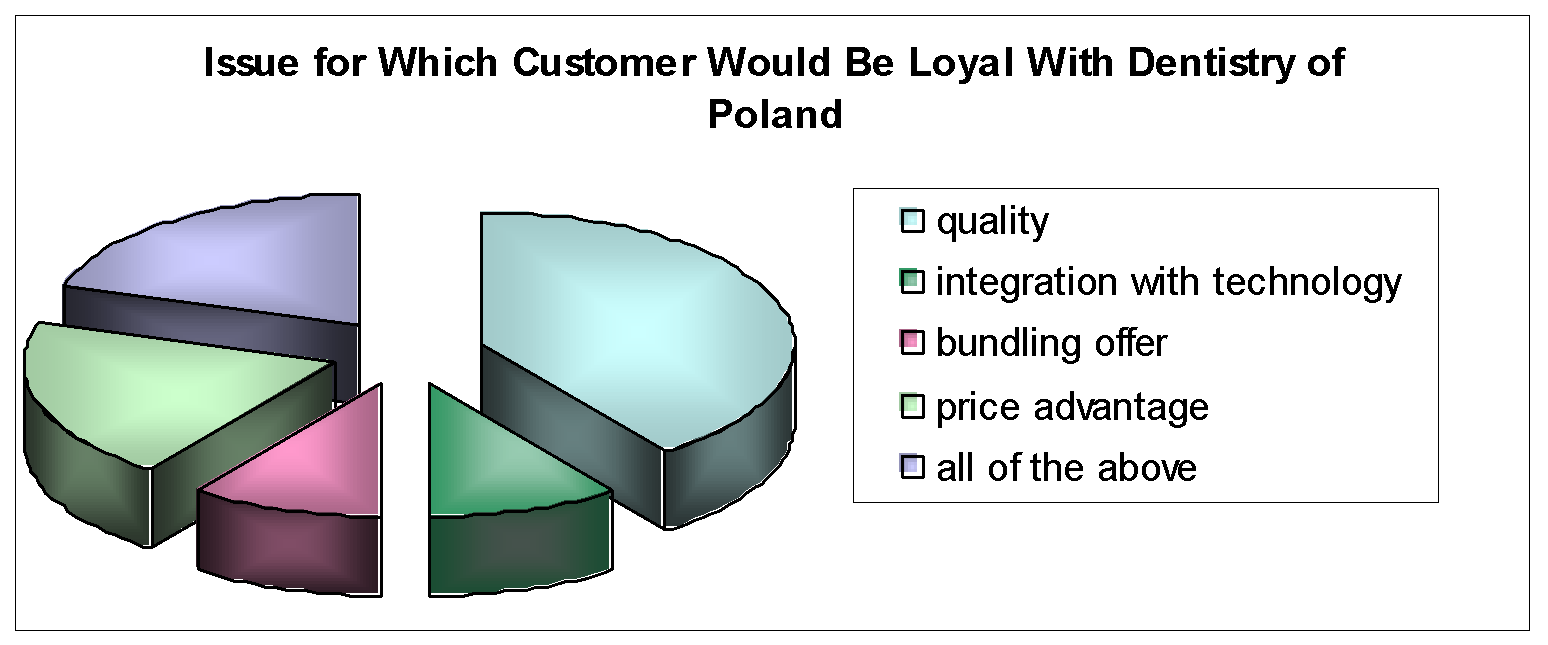
The Most Significant Obstacles in the Internet Connectivity
Ten percent interviewees suggested low speed, 20% suggested medium speed, and 30% went for interrupted connectivity, whereas 30% chose lack of direct linkage with corporate network and 10% richness.
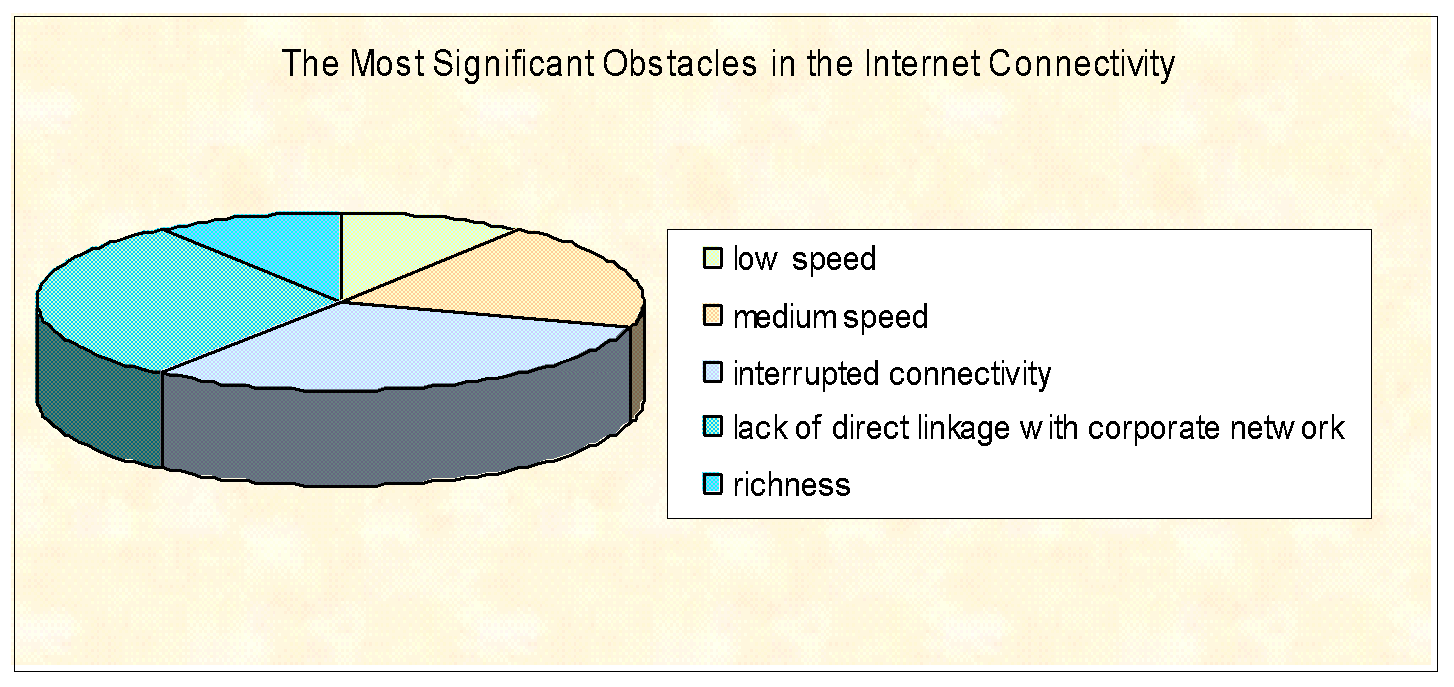
Question 7: Whether the Respondents Have Clear Perception of E-Commerce System or not
Thirty percent of people had no perception of the E-commerce system, 60% went for saying yes, whereas 10% stated no comments.
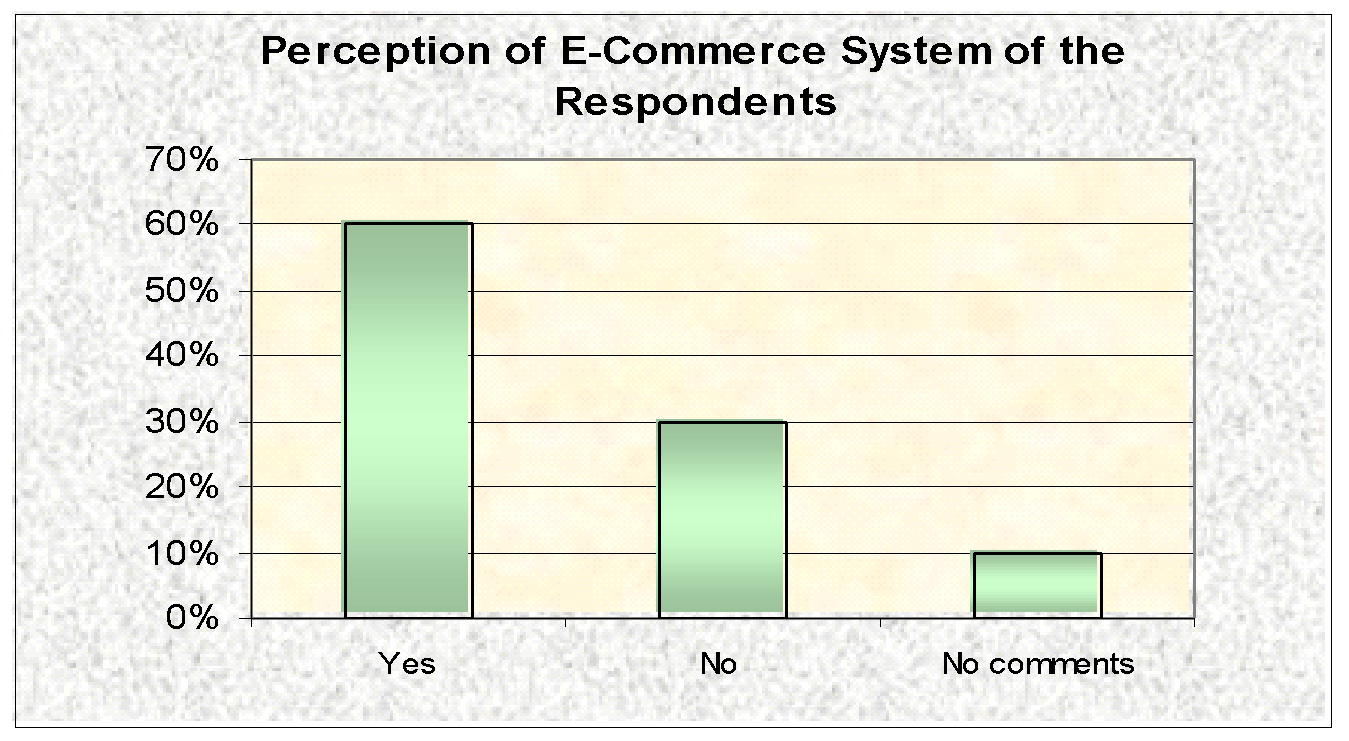
Section B: About Research
To What Extent the Respondents Agree That e-commerce System Would Play Vital Role in International Trade
Forty percent of people agreed with the matter, 20% strongly agreed, 10% was neutral, whereas 20% disagreed and 10% strongly disagreed to the proposed argument.
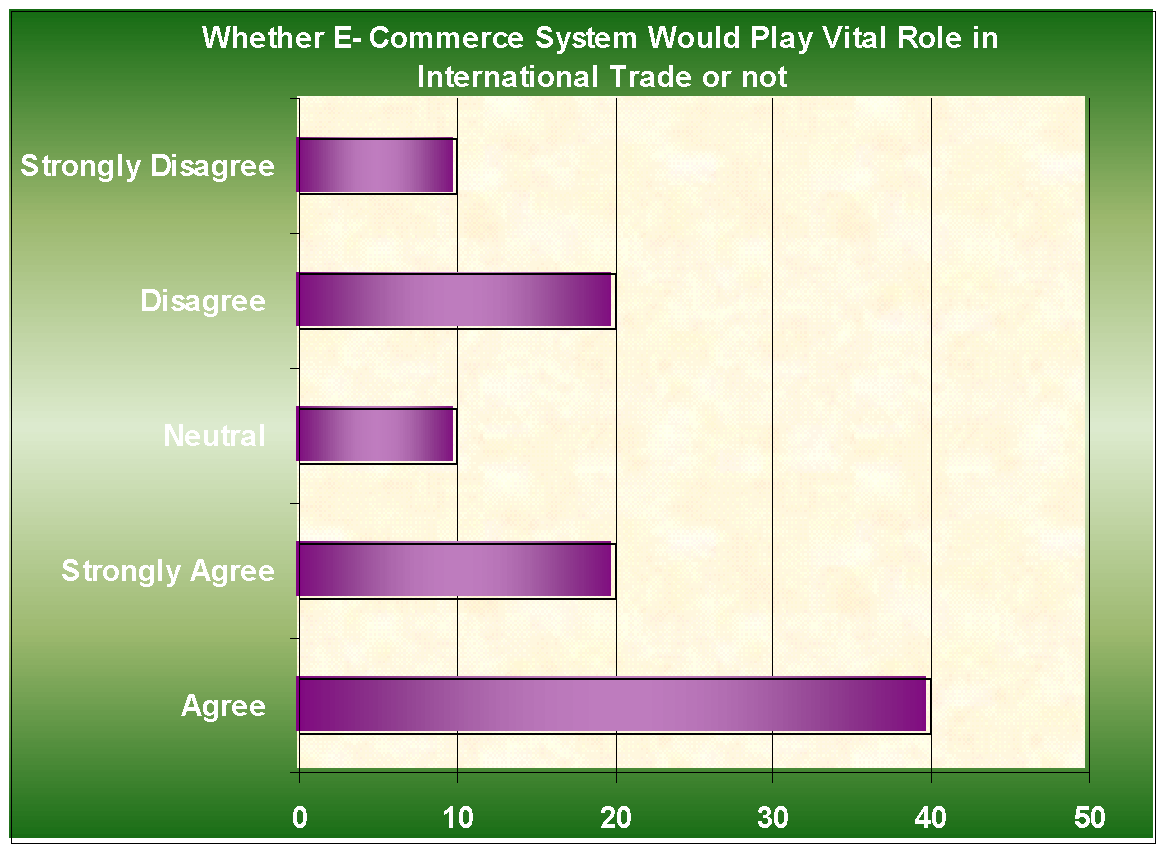
Whether the Respondents Agree That Integration of IT Would Develop dentistry-based Medical Tourism in Poland
Although 60% respondents agreed and 20% strongly agreed that integration of IT would develop dentistry-based medical tourism in Poland, 10% stayed neutral, five percent disagreed, and 5% strongly disagreed to this.
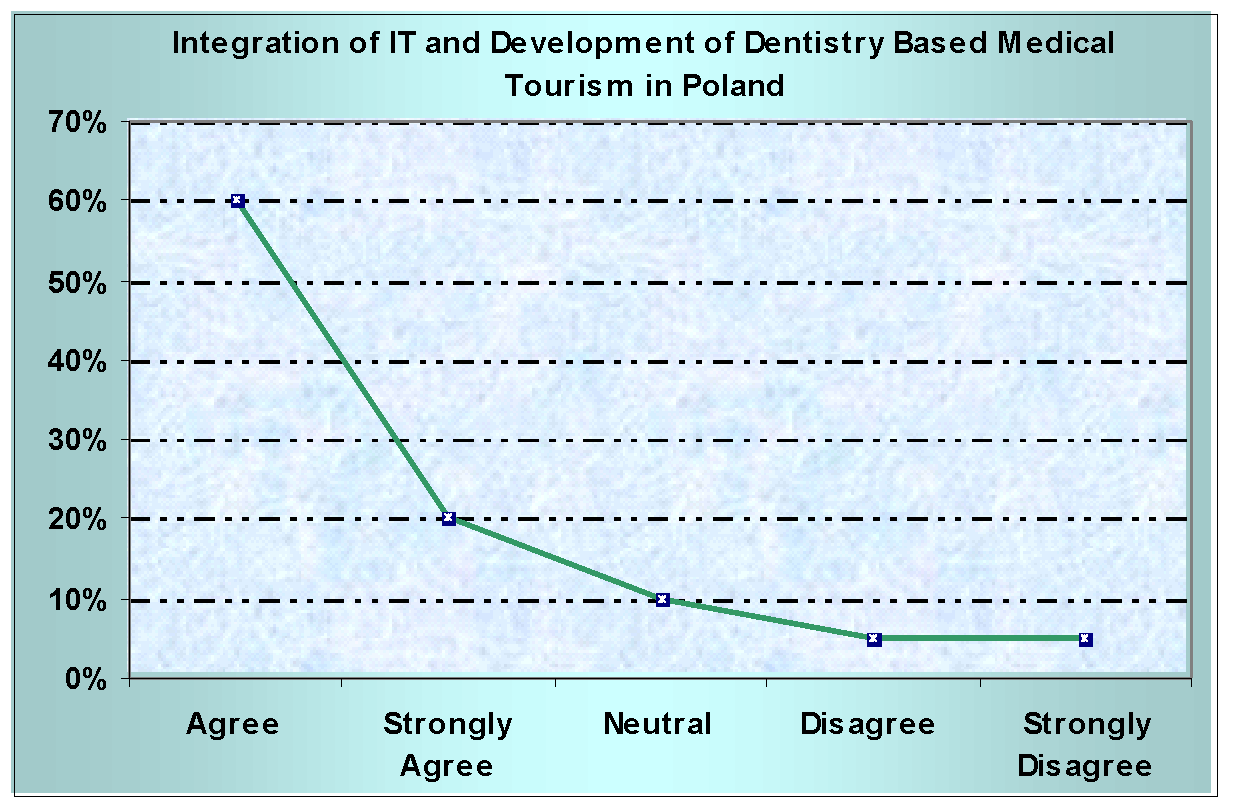
Whether the Dentistry Service Providers in Poland Use Backdated E-Commerce System
With 30% of people agreeing to this point, 30% strongly agreed, 15% stayed neutral, 15% disagreed, and 10% strongly disagreed.
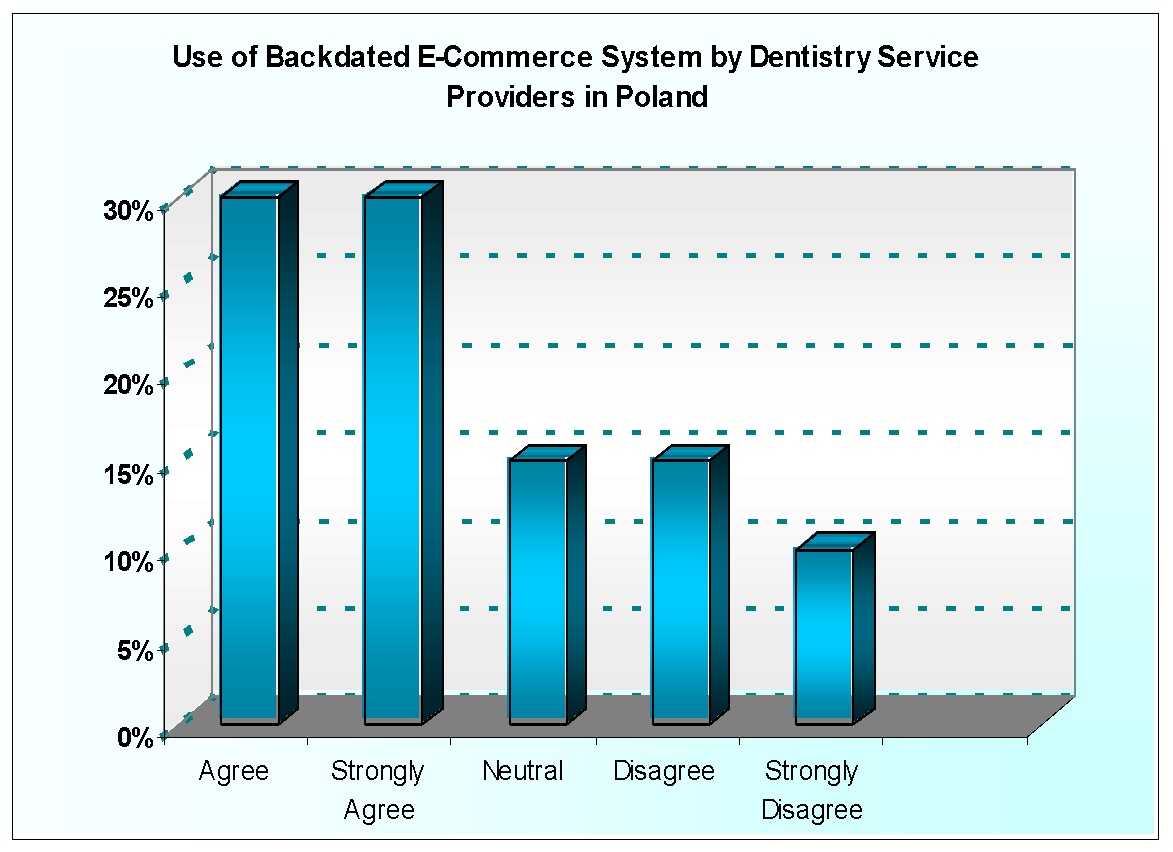
Whether the Dentistry Service Providers in Poland Should Offer Online Consultancy Service or Not
Twenty percent of people agreed to this, 10% strongly agreed, whereas 30% stayed neutral mainly for lack of knowledge about online consultancy services. Conversely, 20% disagreed and 20% strongly disagreed to the argument.
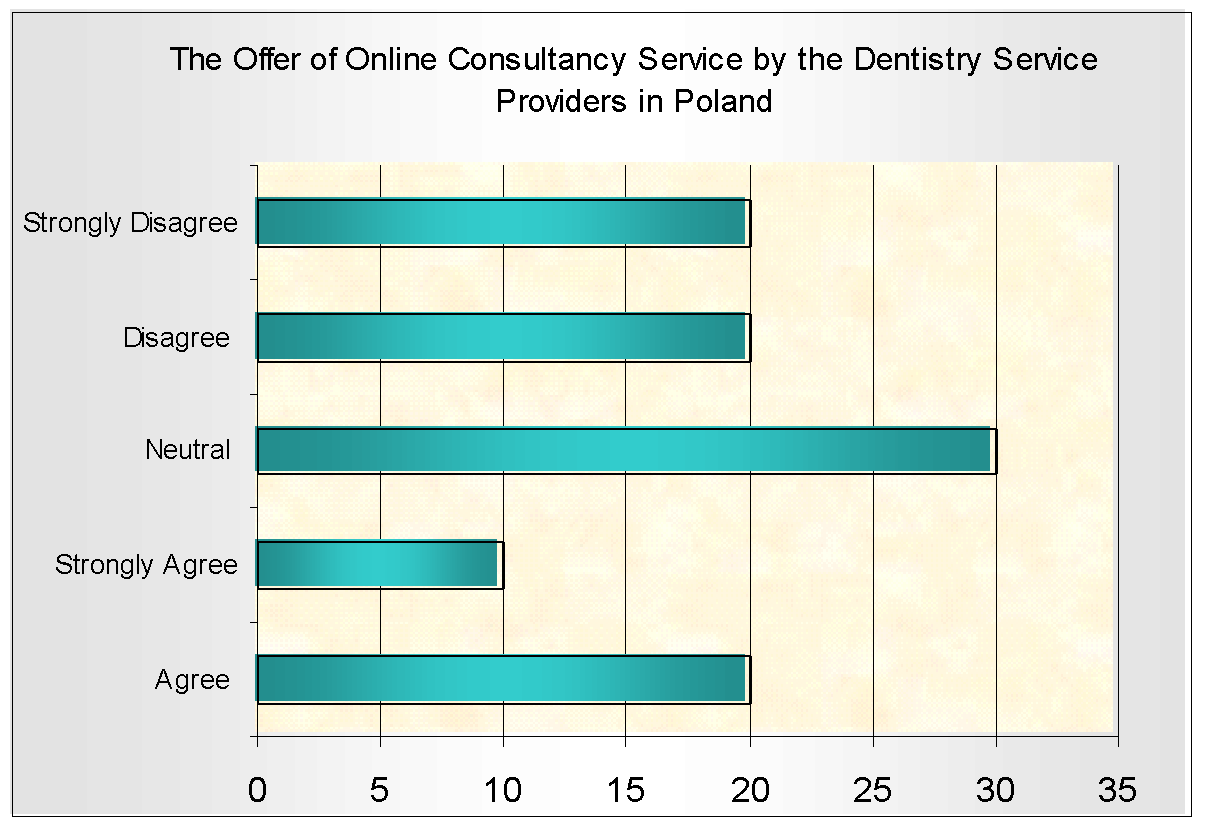
Do the Respondents Agree That Dentistry Service Provider in Poland Should Include Online Payment System
Fifty percent people agreed, 20% strongly agreed, 5% remained neutral, whilst 15% disagreed and 15% strongly disagreed to this point of idea.
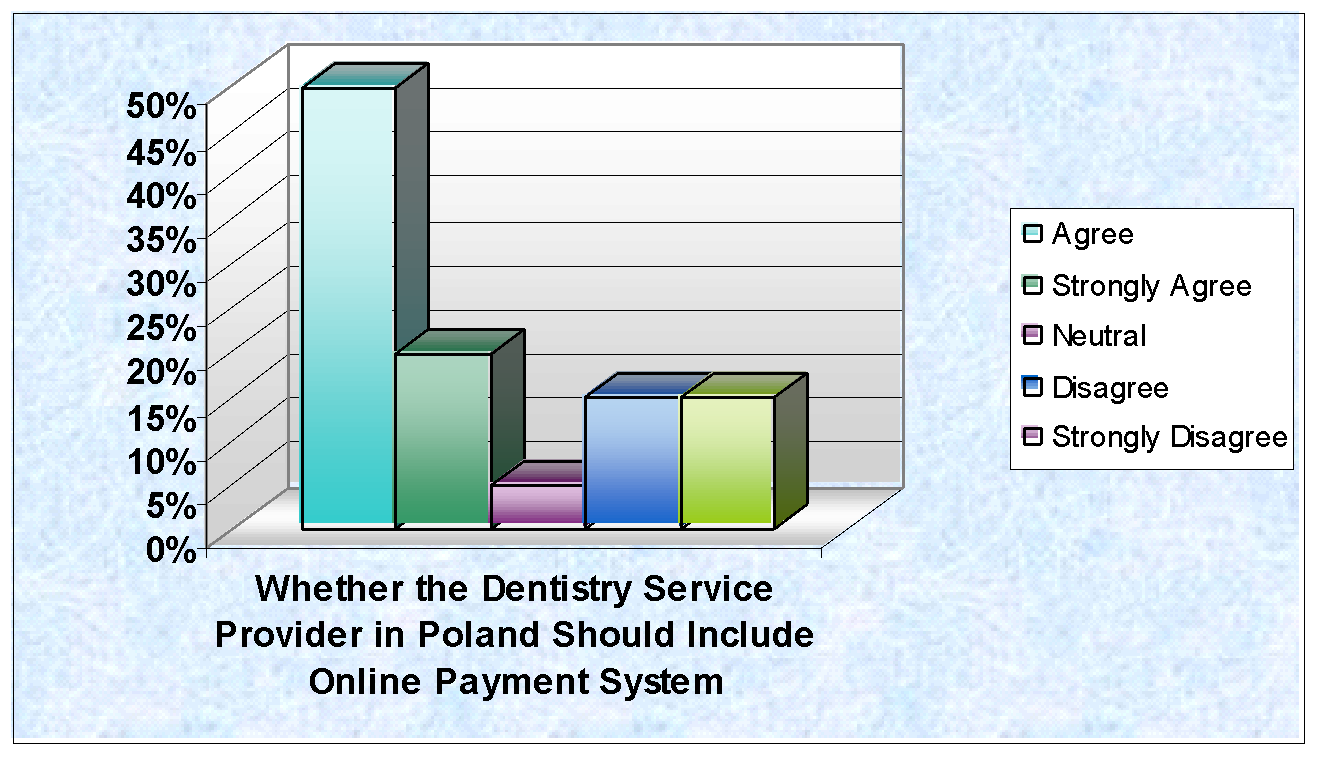
Do the Respondents Agree That Dentistry Service Provider in Poland Should Include Online Membership Facilities and Booking Facilities
A large number of the surveyed population seemed to be reluctant to answer this question due to lack of sufficient awareness. Therefore, 40% remained neutral, 20% argued that they agree with it, 10% strongly agreed, whilst 20% disagreed and 10% strongly disagreed.
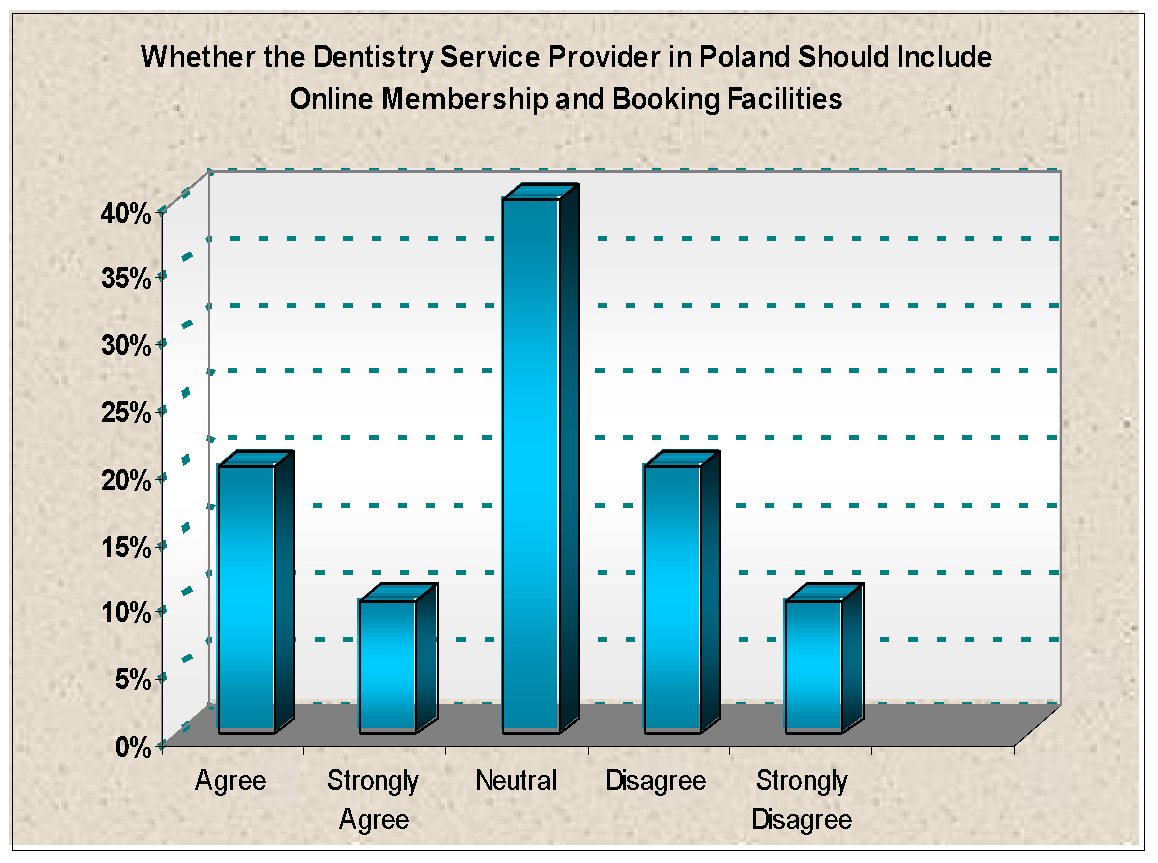
Do the Respondents Agree That Dentistry Service Provider in Poland Should Develop Networking
Among 40 interviewees, 35% agreed to this point, 15% strongly agreed, 35% stayed neutral, whereas 5% disagreed and 10% strongly disagreed.
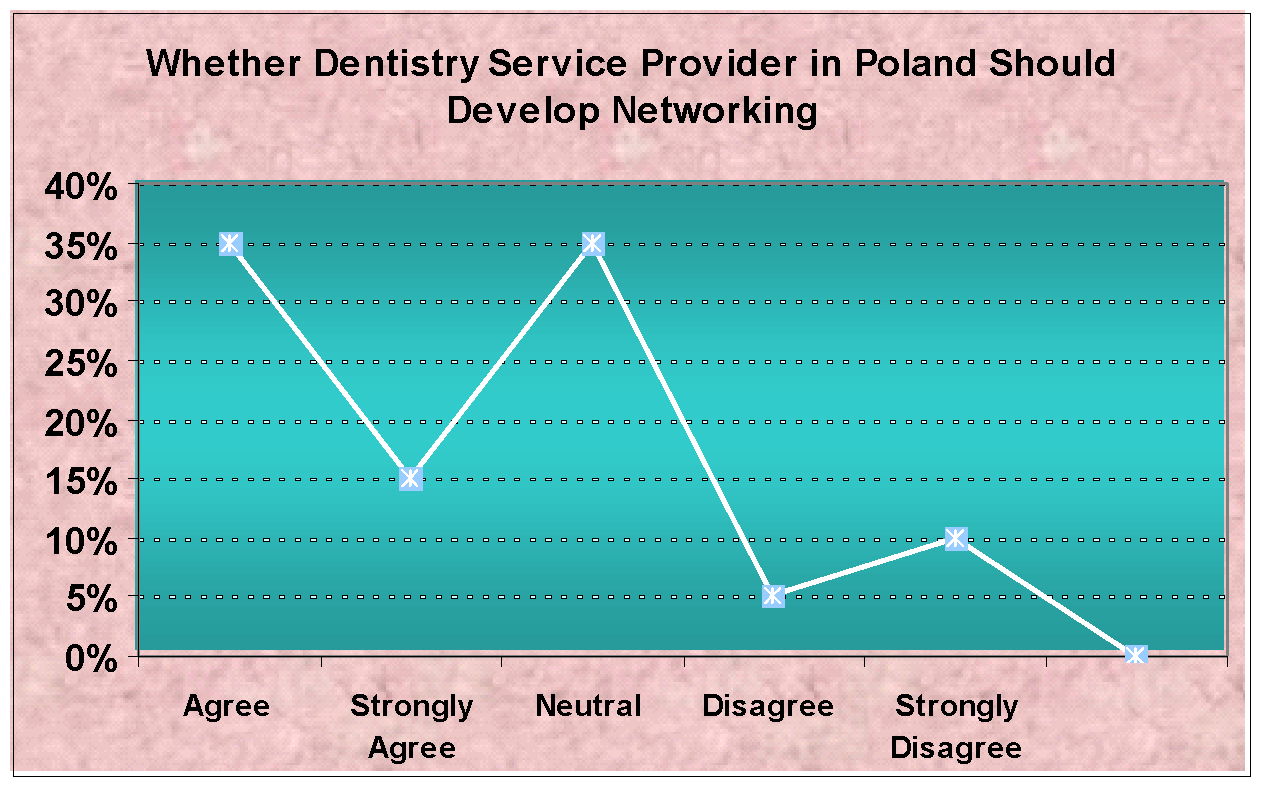
Whether the Dentistry Service Providers in Poland Should Develop Communication System
Although 30% agreed and 20% strongly agreed to the fact that dentistry service providers in Poland should develop communication system, 25% remained reluctant to comment anything on this, 15% disagreed, and strongly 10% disagreed to this point.
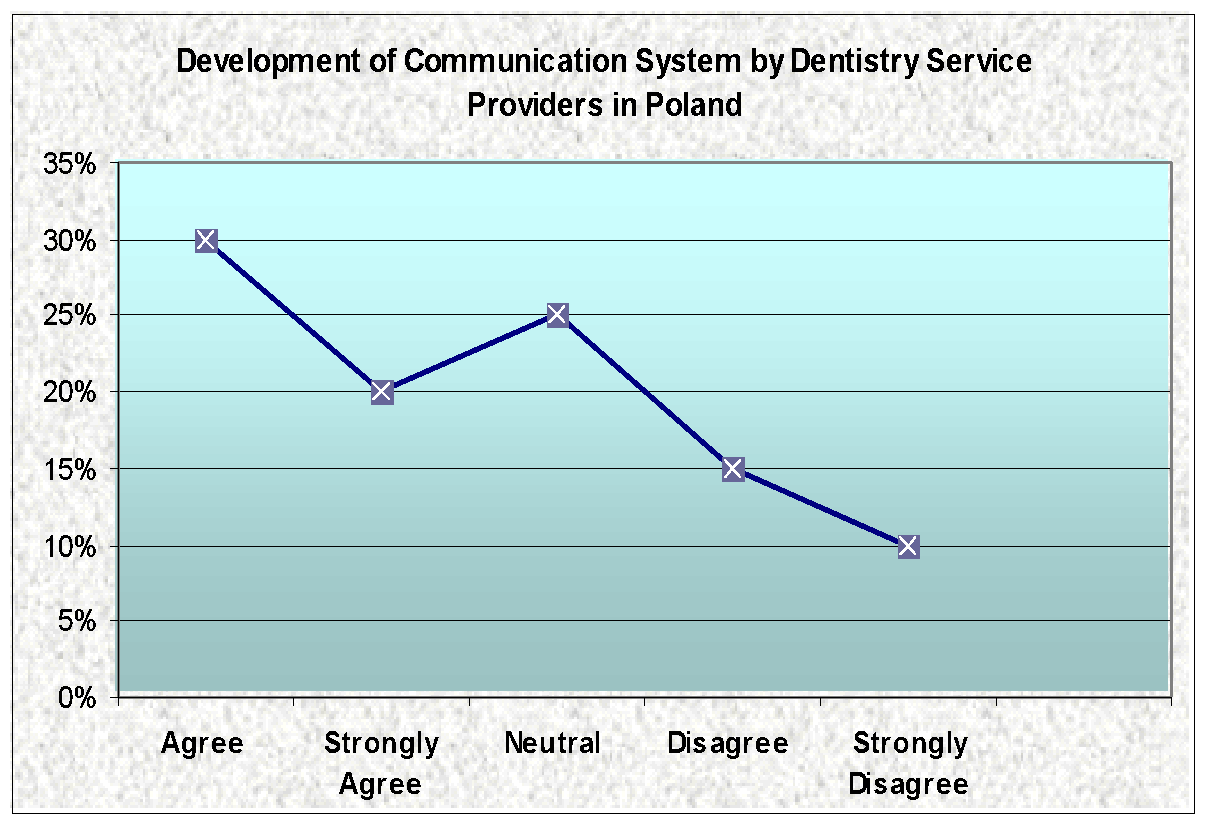
Do the Respondents Agree That Dentistry Service Providers in Poland Need to Integrate Latest Software like SAP, ERP, and CRM
Most of the proportion of the surveyed population was not aware of the uses of such a wide range of software facilities that are available to develop this service sector. In this context, 35% of respondents have remained neutral. On the other hand, 30% agreed to the integration of this software, 20% strongly agreed, 10% disagreed, and 5% strongly disagreed.
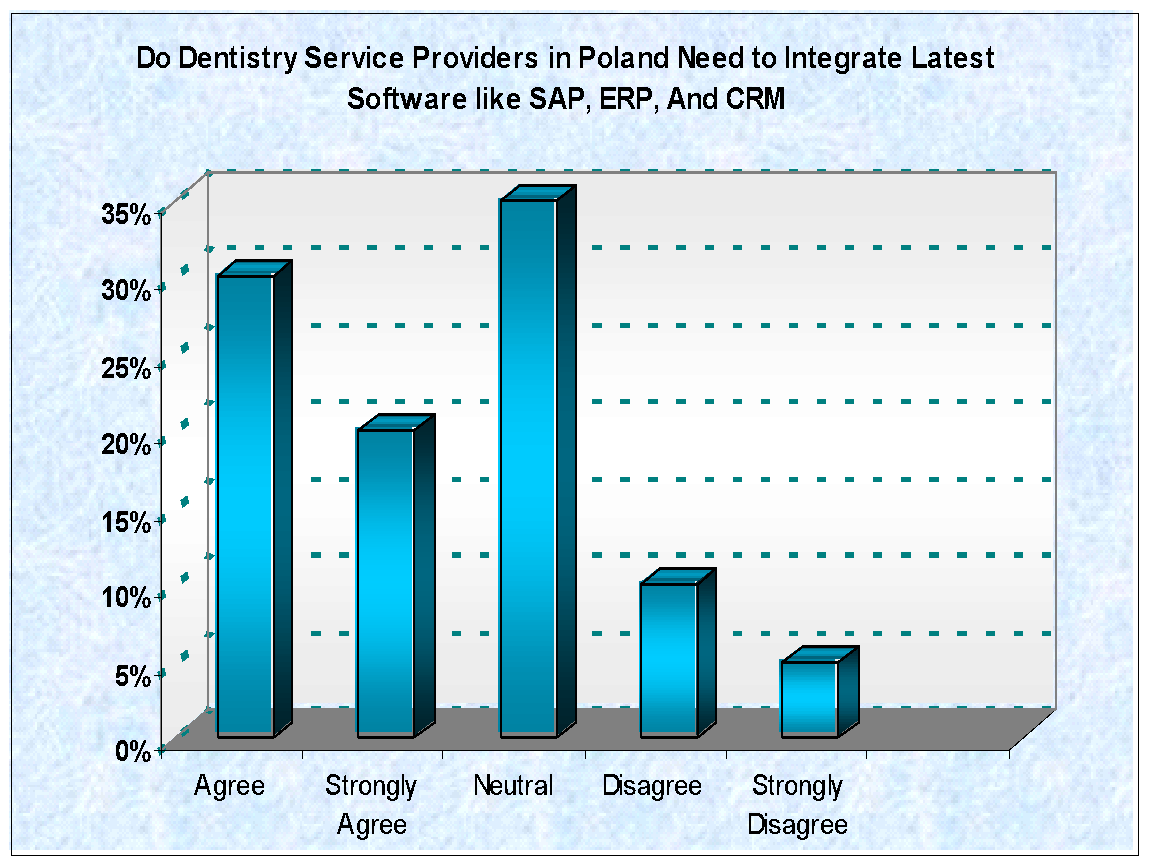
Do the Respondents Think the Cost for Internet Is a Major Problem for Quick Growth of E-Commerce in the Polish Dentistry
There has been a mixed reaction to the answer to this question. About 25% of people have agreed with this proposed point of view, 25% strongly agreed and 5% stayed neutral. On the other hand, 20% of respondents have argued that they disagree that the cost for the internet is a major problem for the quick growth of e-commerce in polish dentistry, whereas, about 25% have strongly disagreed.
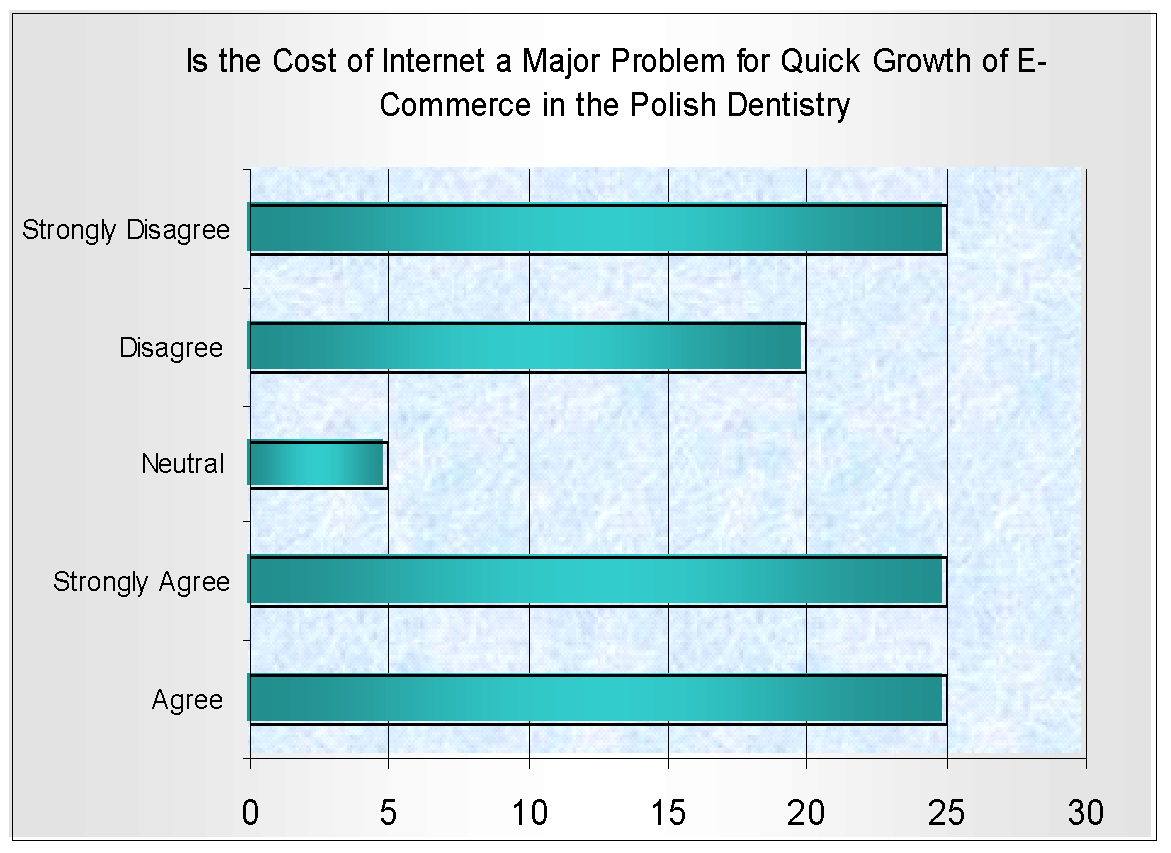
Discussion
IBRKK (2008) pointed out that the country accelerating its pace of economic growth with an annual average of around 6.6% of GDP in 2007 and placed itself at the eleventh position of highest GDP scorer, though in 2008, there were some risks of inflationary pressures and budget deficits due to the historical link of a socialist economy. Badica et al (2005) implied that Poland is applying the Dutch model of agent-based e-commerce practice that utilized as effortless price negotiation tools like English auctions by which Poland started to welcome the ICT integration in modern business applications rather than maintaining complete e-supply chain management.
Badica, Ganzha, and Paprzycki (2007) confirmed that at this stage e-commerce in Poland has principally concerned with the establishment of a strong infrastructure dealing with huge information flow linking with e-governances for the business community in every sector where the software vendors are influencing for the adoption of different application software along with hardware.
Heiderhoff and Zmij (2005) pointed out that Poland has seriously driven to set legislative framework for the standards practice of e-commerce where the obligatory legal reformation is ongoing due to matching with the requirements of unification with the European Union standard. The Polish Civil Code- 1964 is most significant foundation of electronic contract law including its amended sections of 2003 that permitted the business community to use of ICT enabled electronic system of business communication with legal base where the amended sections put into practice the foremost rules of e-commerce in Poland. At the same time, Electronic Signatures Act- 2001 and the Electronic Payment Instruments Act- 2002 are integral part of the Polish e-commerce law by which the country has jumped a one-step forward to meet the time-worthy demand of the business community (Heiderhoff and Zmij 2005).
Tamowicz et al (2000) mentioned that the company law and corporate governance of Poland has grounded with a long historical development of the socialist legal system including civil and commercial codes and replaced with the new Company Law- 2001 and the Law on Domestic Court Register in state of the old Commercial Code of the communist regime. With huge political changes, the Polish business communities are now evidencing the political economy of capitalism as a member country of the European Union. By integrating all the necessary reformation legislation, Poland has witnessed as a global player in the international trade with its significant products and services where the digital dentistry services gained at the top and favored all over Europe and USA.
Zukowski (2010) added that Poland has turned into the most admired dynasty for the global medical tourism segment while in 2009, PAMT6 recorded at least 0.30 million passengers visited Poland in medical purposes and most of them come for dentistry service. The popularity of Polish dentistry service has been flourishing globally due to its cheapest price and global standard quality. Due to the tremendous growth dentistry service industry of Poland, PAMT treated it as a diversified export and EU has delighted to call it as an ‘Innovative Economy’ and urged their interest to investing in the digital dentistry sector of Poland. California Dental Association (2010) argued that the acceleration of Polish dental care is a consequential outcome of the globalisation and 17% of the global medical tourists prefer Poland for their dentistry service.
Garnik (2006) identified the more significant barriers of e-commerce in Poland emphasizing on the lack of consumer trust regarding the web application rather than face-to-face interaction among the vendor, customer and banker, which evidenced that the customers cannot come out from their traditional shopping habits. Moreover, it also evidenced that the customers also afraid with the security challenges of online transactions while the vendors have failed to protect customers’ data stored at their databases. Such dilemmas seriously influenced the e-shops of Poland and raised confusion regarding the credibility and reliance of the e-commerce system among the Polish civil society concerned with the Internet application (Wrycza et al 2007)
Wrycza et al (2007) also added that the Polish e-commerce integration policies are more progressively concerned with further antagonistic and disordered environments of the management structures of the Polish business concerns. The present situation of the standards of e-commerce practice is enough insufficient to face the challenge of quick-shifting in the Polish economy while the society represents optimistic technological needs, social psychology, incentives and an affirmative approach. In addition, the most noteworthy dilemma is that the e-commerce policy of the nation as well the existing literature of medical tourism has basically been mistreated to take into consideration of the impact of prospective digital dentistry while they can consider as the focal point towards e-commerce integration. Thus, there exists a major research gap with the incorporated factors affecting the decisions of dental clinics to up-to-date the e-commerce policy of Poland and coordinating them with the value chain of the e-business model arguing with the policymakers and legislators for reconfiguring the e-commerce integration standards (Ward et al 2008).
Conclusion
- Dentistry service providers of Poland have no efficient internal technological team to control the operation of e –commerce system, they need to employee some external e- business experts as in near future it will be very much difficult for the Dentistry service providers to develop dentistry-based tourism in Poland and to sustain over existing competitive advantage and reputation in the global market;
- Dentistry service providers of Poland should restructure the entire e-commerce system to build up a fully automotive system with online payment system and online consulting facilities as they are currently using a backward agent based Dutch e-commerce model;
- However, it has already mentioned that the e-commerce is not fully dynamic in nature and overall e-commerce is still underdeveloped, the government should integrate numerous options, increase accessibility, and upgrade generic internet service in terms of speed and flexibility;
- It is important to note that high speed of internet service, or rapid use of e-mail are not the appropriate solution to develop the e-commerce system, there are many other factors are connected with the development of e-commerce segment such as security system, database controlling system to store important information etc.
- However, the security system has to design in accordance with the existing rules and regulations and all dentistry service providers of Poland must formulate their own corporate policy to develop security system as the tourist are concerned about privacy issues;
- This dissertation recommended that the dentistry service providers should increase the budget for the IMC campaign to create awareness among the people about the necessity of dental care in regular life and their available online services. Thus, the local service provider, as well as the policymakers, would enjoy the effectiveness of the e-commerce system because the awareness program would increase the number of tourists;
- The dentistry service providers in Poland should arrange an electronic fund transfer system by contracting with PayPal, Money Bookers, or credit cards. It would also be effective to consider EFTPOS and card-based EFT systems as most of the tourists would like to avoid traditional payment systems;
- Most of the respondents argued that the e-commerce system would play vital role in international trade and integration of IT would develop dentistry-based medical tourism in Poland but the service providers are not enjoying highest satisfaction due to use of a traditional model of e-commerce system. On the other hand, service providers start working as soon as patients contact with them but initial stage tourists do not receive online consultancy services though it is possible to solve many problems by this way;
- At initial stage, dentistry service providers ensure accommodation facilities, translators, Professional customer care to recommend dental treatment with required process and costs but It is important to note that only dental care and simple medicine can cure many dental problems without any surgery, so, it is not always essential to come in Poland for treatment. As a result, the service providers have the opportunity to give online suggestions to increase their customer base;
- The dentistry service providers in Poland should build an infrastructure Development Model, which would be optimized or innovative to improve the elasticity and quality of the infrastructure with the intention that the unit’s ability to deliver upgraded services and reduce the threat.
- In addition, dentistry service providers in Poland should recruit some external e-business experts to help the dentists and patients to develop dentistry-based tourism in Poland.
The implication of e-commerce in the global business communities has gained greater importance than any other issue while the dentistry-based medical tourism of Poland has identified to lay behind the concurrent progress by aligning with the Auction-based Dutch model, which necessarily urged for immediate improvement. The prolonged barriers of Polish dentistry-based e-commence involved with limited knowledge domain in this sector, obtainable technological barriers, shortage of awareness, unaffordable internet and system maintenance cost, infrastructural investment, a gap of confidence level, and to gaining a positive return on investment. To address to overcome such barriers, Polish dentistry needed to emphasize on competent human resource development for modern e-commerce implications, integrate ERP and SAP software along with an e-commerce platform to generate accelerated revenue from the international trade concerned with dentistry product and service exporting. At the same time, it is also urged to extend the area of governmental cooperation and incentives to inspire the dentistry of Poland for materialization of their existing stage of e-commerce with financial investment from the government and EU member states.
Reference List
Badica, C. et al (2005) Utilizing Dutch Auction in an Agent-based Model E-commerce System. Web.
Badica, C. Ganzha, M. & Paprzycki. M (2007) Developing a Model Agent-based E-commerce System. Web.
Böhle, K. (2002) Integration of Electronic Payment Systems into B2C Internet Commerce. Web.
Garnik, I. (2004) Building Website Credibility – A Prospective Solution to e-Commerce in Poland. Web.
Garnik, I. (2006) Factors affecting credibility of e-shops in Poland. Web.
Grant, R. & Huston, T. (2001) Structuring for E-Commerce Success: Preliminary Models. Web.
Gunnesson, T. & Soderland, K. (2001) Creating Competitive Advantage in Mature E-Retail Markets. Web.
Heiderhoff, B. & Zmij, G. (2005) Law of E-Commerce in Poland and Germany. Web.
Herrick, D. M. (2007) Medical Tourism: Global Competition in Health Care. Web.
Hoffman, D. L., Novak T. P., & Chatterjee, P. (2004) Commercial scenarios for the web: Opportunities and challenges, Journal of computer-mediated communication. 1(3 ).
IBRKK (2008) Poland: Your Business Partner. Web.
IST-Africa Consortium (2006) eBusiness ~ Case Studies. Web.
Kalakota & Robinson. (1999) e-Business – Roadmap for Success. London: Addison-Wesley Longman Inc.,
Kim, C. (2004) e-tourism: an innovative approach for the small and medium-sized tourism enterprises (SMTES) in KOREA. Web.
Kurnia, S. (2007) Identifying e-Commerce Adoption Driving Forces and Barriers: The Case of the Indonesian Grocery Industry. Web.
Laudon, K. C., & Traver, C. G. (2007) e-commerce- Business, Technology, Society. 4th ed. Dorling Kindersley Pvt. Ltd.
Liu, S. (2006) A Theoretic Discussion of Tourism E-commerce. Web.
Mäkeläinen, S. I. (2006) From B2C to C2C e-commerce. Web.
Malhotra, N. K. (2009) Marketing Research- An Applied Orientation. 5th ed. Prentice-Hall of India Private Limited.
Marshall, C. & Rossman, G. (1999) Designing qualitative research. 3rd ed. Thousand Oaks – CA: Sage.
Miles, M. & Huberman, M. (1994) Qualitative Data Analysis. 2nd ed. Beverly Hills, CA: Sage.
OECD (2006) Electronic Commerce: Market Access Issues — Existing Commitments for Online Supply of Services. Web.
Saunders, M. Thornhill, A., & Lewis, P., (2003) Research Methods for Business Students. 4th ed. London: FT Prentice Hall.
Sekaran, U. (2006) Research Method for Business. 4th ed. John Wiley & Sons, Inc.
Tamowicz, P. et al (2000) The European Corporate Governance Network A Survey on Polish Corporate Governance Rules, Statistics and Institutions. [pdf] Web.
UNCTAD (2005) Information Economy Report. Web.
Ward, K. Coe, N. M. & Johns, J. (2008) Post-socialist varieties of temporary staffing: Evidence from the Czech Republic and Poland. Web.
Wrycza, S. et al (2007) Assessing the Adoption of E-Business in the Region: A Quantitative Study. Web.
Zikmund, W. M. (2006) Business Research Methods. 7th ed. Orlando: Harcourt Publishers.
Zukowski, M (2010) Annual National Report 2010: Pensions, Health and Long-term Care- Poland. Web.
Zwass, V. (1998) Structure And Macro-Level Impacts of Electronic Commerce: From Technological Infrastructure to Electronic Marketplaces. Wiley: New York.
Appendix 1
Questionnaire
Section A: (About respondents)
- Your name: ______________________________
- Please select you age (years) group:
- 18-25
- 26-35
- 36-45
- 46-55
- +55
- Please select your profession:
- Dentist
- Medical representative
- IT professional
- Other
- Please mention your Years of experience:
- Under five years
- between five and ten years
- More than Fifteen years
- What is the most significant issue for which customer would be loyal with Dentistry of Poland rather than other countries?
- Quality
- Integration with technology
- Bundling offer
- Price leverage
- all of above
- What are the most significant obstacles in your internet connectivity?
- Answer:
- Low speed
- Medium speed
- Interrupted connectivity
- Richness
- Lack of direct linkage with corporate network
- Do you have clear perception of the e-commerce system?
- Yes
- No
- No Comments
Section B: (About research)
Please state to the level you agree or disagree with the following statements:
- To what extent you agree that the e-commerce system would play vital role in international trade.
- Answer: – ………………………………………………………………………….
- [Agree]
- [Strongly Agree]
- [Neutral]
- [Disagree]
- [Strongly Disagree]
- Do you agree that integration of IT would develop dentistry-based medical tourism in Poland?
- Answer: – ………………………………………………………………………….
- [Agree]
- [Strongly Agree]
- [Neutral]
- [Disagree]
- [Strongly Disagree]
- Do you agree that dentistry service providers in Poland use backdated e-commerce system?
- Answer: – ………………………………………………………………………….
- [Agree]
- [Strongly Agree]
- [Neutral]
- [Disagree]
- [Strongly Disagree]
- payment booking consultancy
- Do you agree that dentistry service providers in Poland should offer online consultancy service?
- Answer: – ………………………………………………………………………….
- [Agree]
- [Strongly Agree]
- [Neutral]
- [Disagree]
- [Strongly Disagree]
- Do you agree that dentistry service provider in Poland should include online payment system?
- Answer: – ………………………………………………………………………….
- [Agree]
- [Strongly Agree]
- [Neutral]
- [Disagree]
- [Strongly Disagree]
- Do you agree that dentistry service provider in Poland should include online membership facilities and booking facilities?
- Answer: – ………………………………………………………………………….
- [Agree]
- [Strongly Agree]
- [Neutral]
- [Disagree]
- [Strongly Disagree]
- Do you agree that dentistry service provider in Poland should develop networking?
- Answer: – ………………………………………………………………………….
- [Agree]
- [Strongly Agree]
- [Neutral]
- [Disagree]
- [Strongly Disagree]
- Do you agree that dentistry service providers in Poland should develop communication system?
- Answer: – ………………………………………………………………………….
- [Agree]
- [Strongly Agree]
- [Neutral]
- [Disagree]
- [Strongly Disagree]
- Do you agree that dentistry service providers in Poland need to integrate latest software like SAP, ERP, and CRM?
- Answer: – ………………………………………………………………………….
- [Agree]
- [Strongly Agree]
- [Neutral]
- [Disagree]
- [Strongly Disagree]
- Do you think the cost for internet is a major problem for quick growth of e-commerce in the Polish dentistry?
- [Agree]
- [Strongly Agree]
- [Neutral]
- [Disagree]
- [Strongly Disagree]
Footnotes
- Information & Communication Technology.
- Client Agent.
- Client Information Center.
- General Agreement on Trade in Services.
- Small and Medium-Sized Enterprises.
- Polish Association of the Medical Tourism.